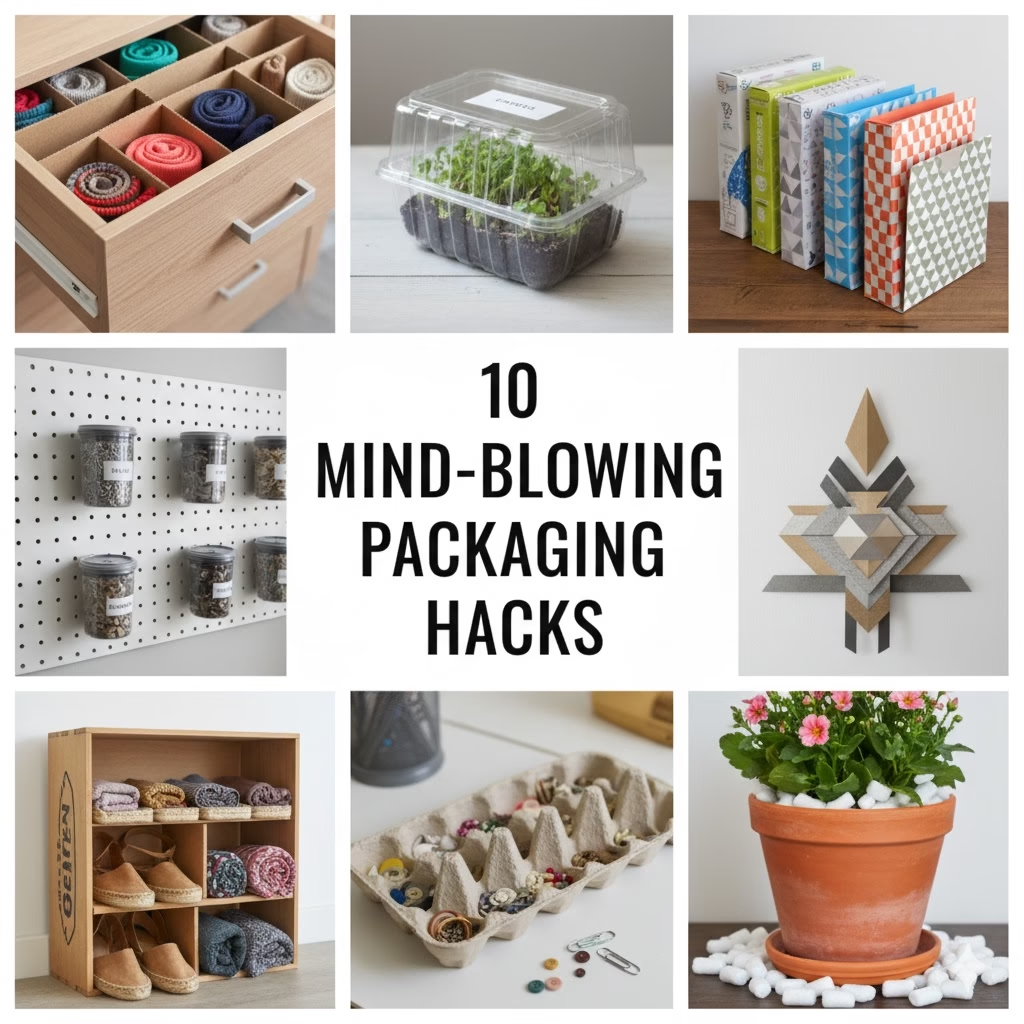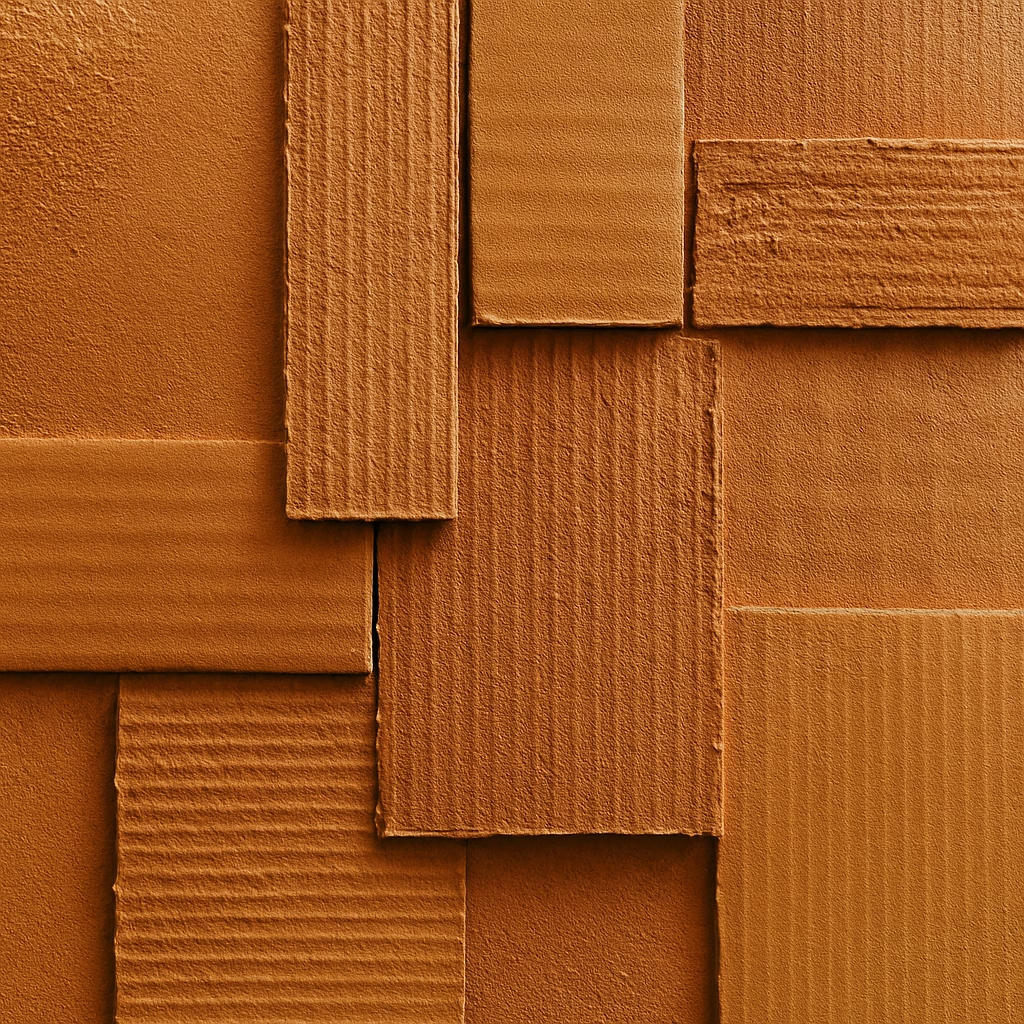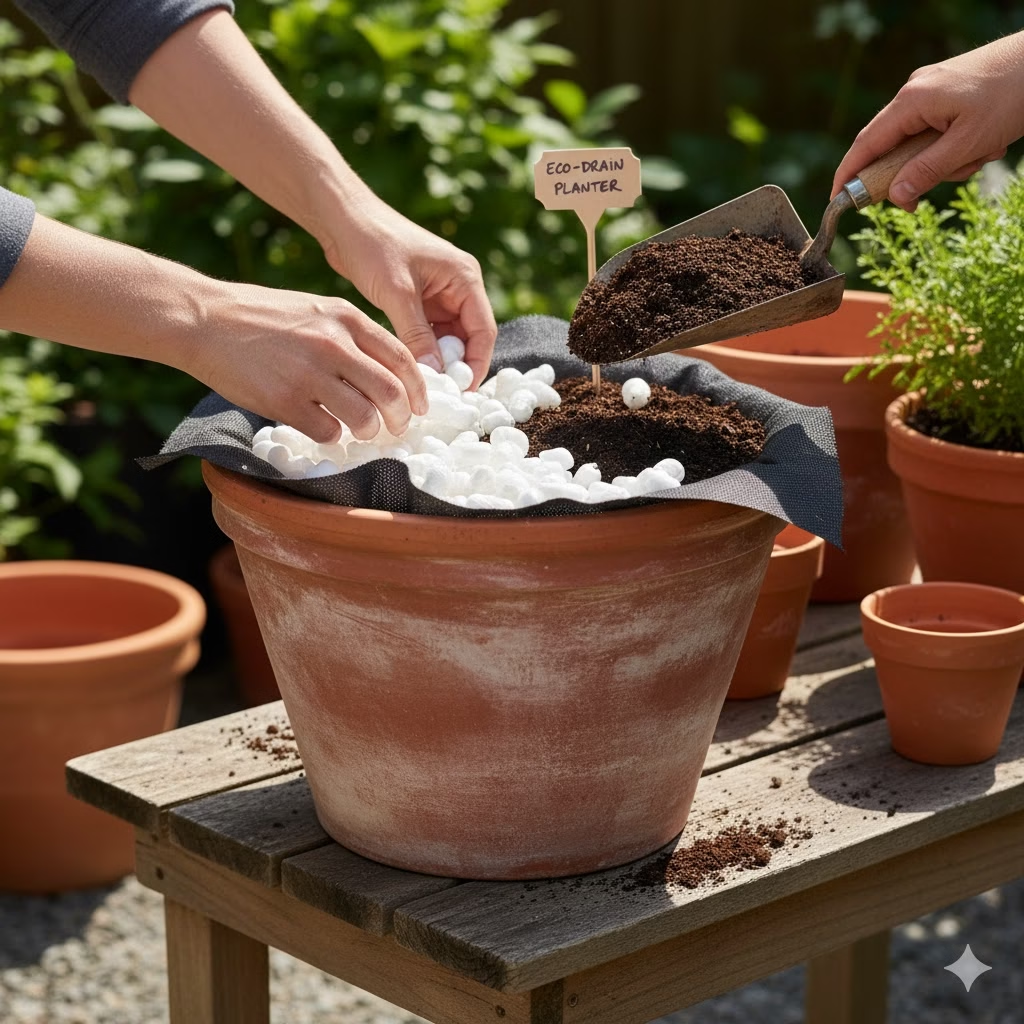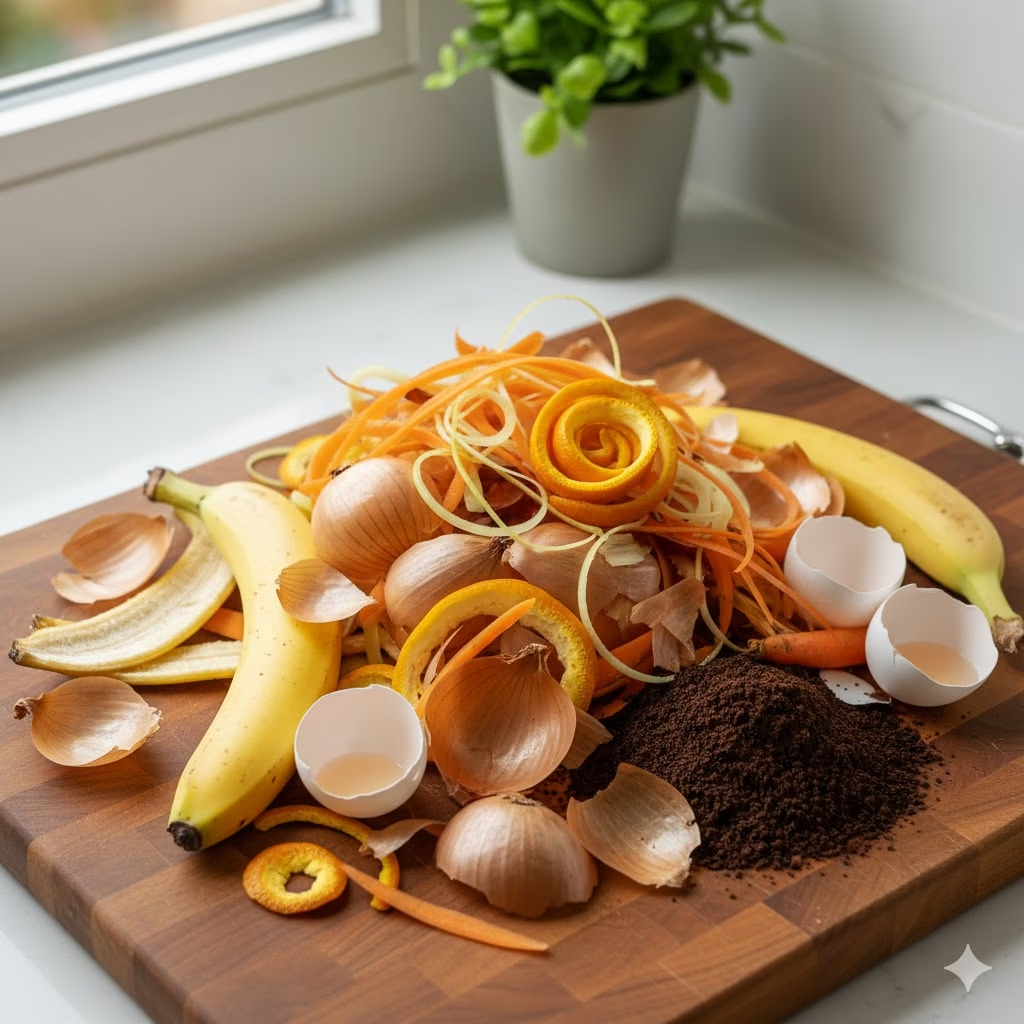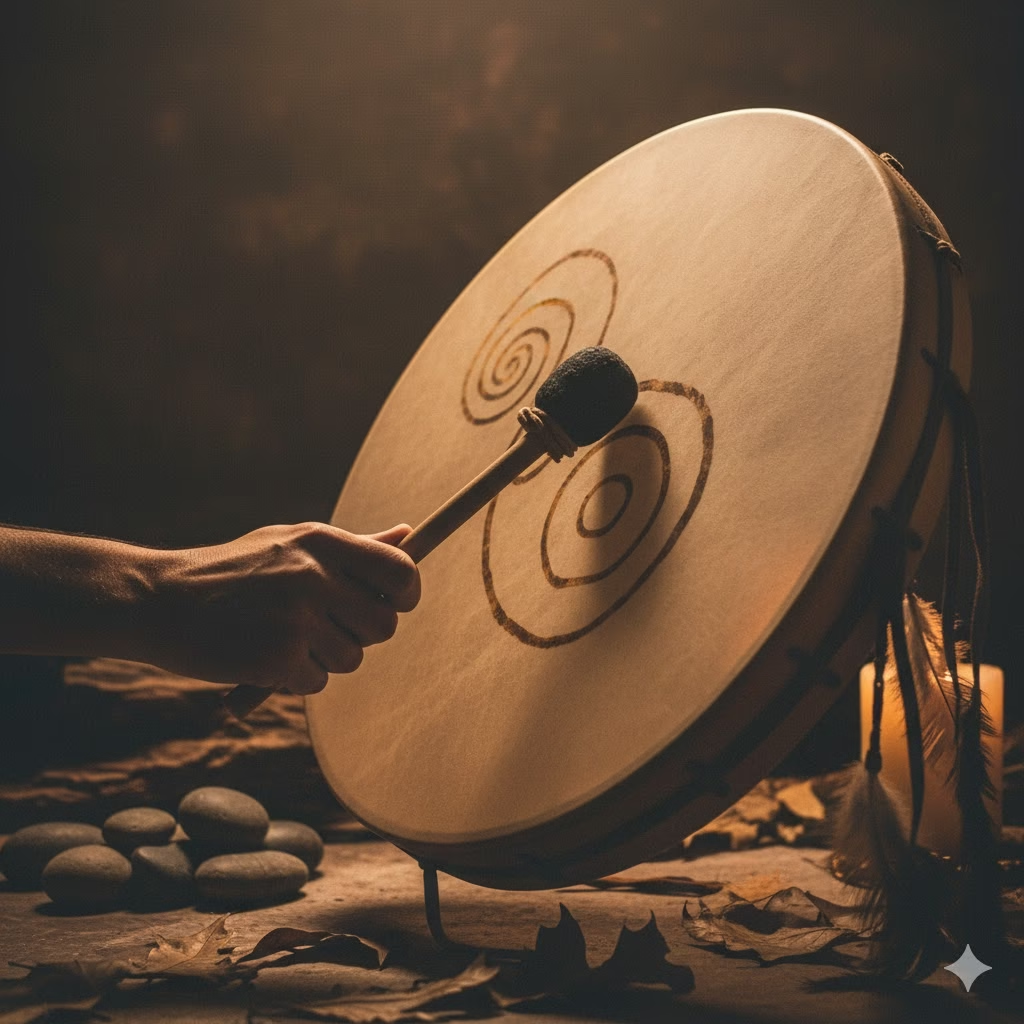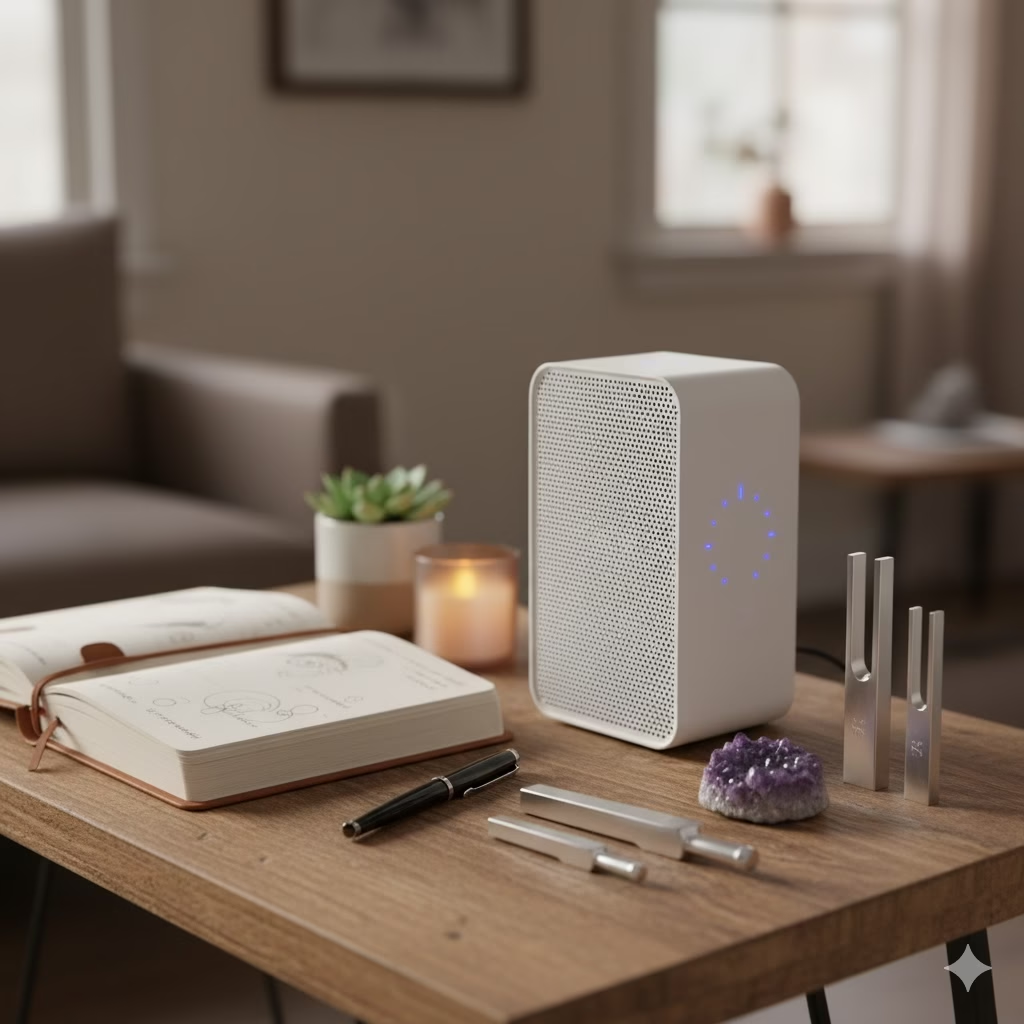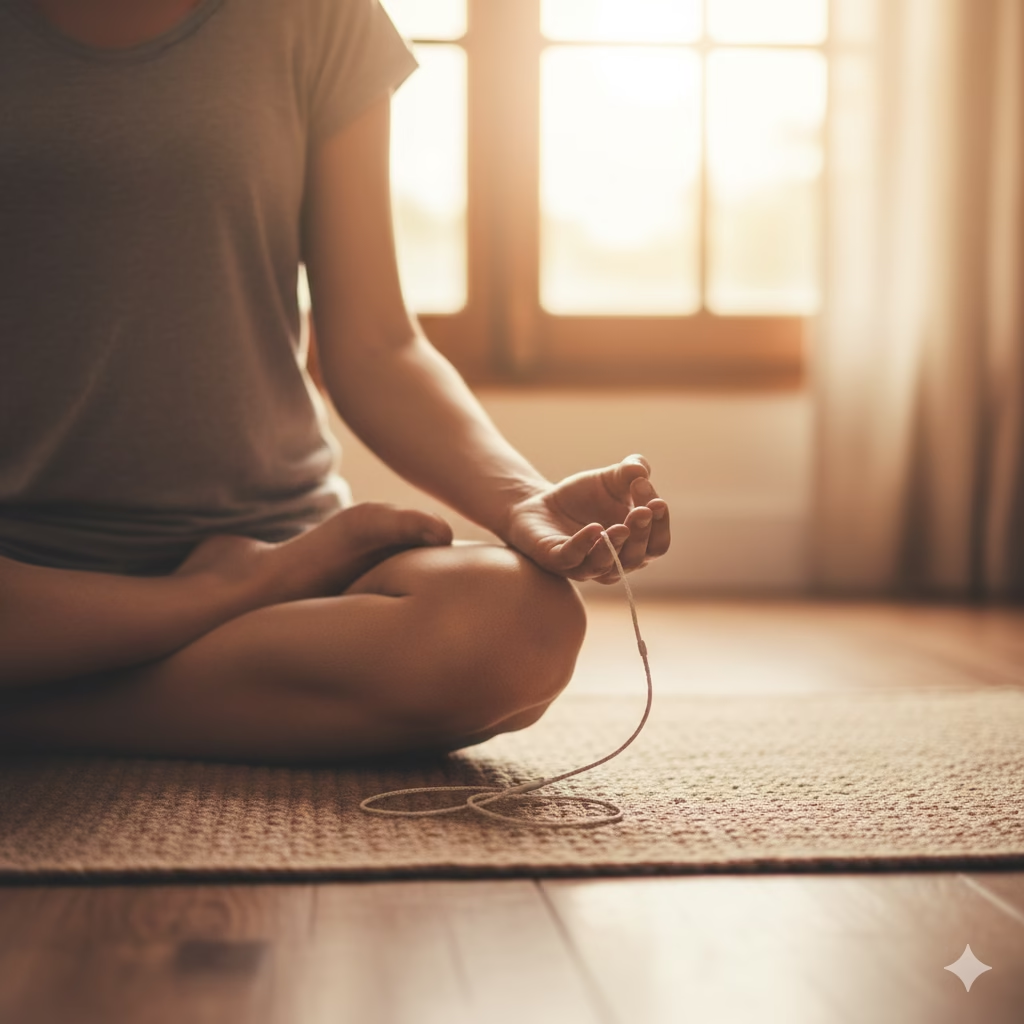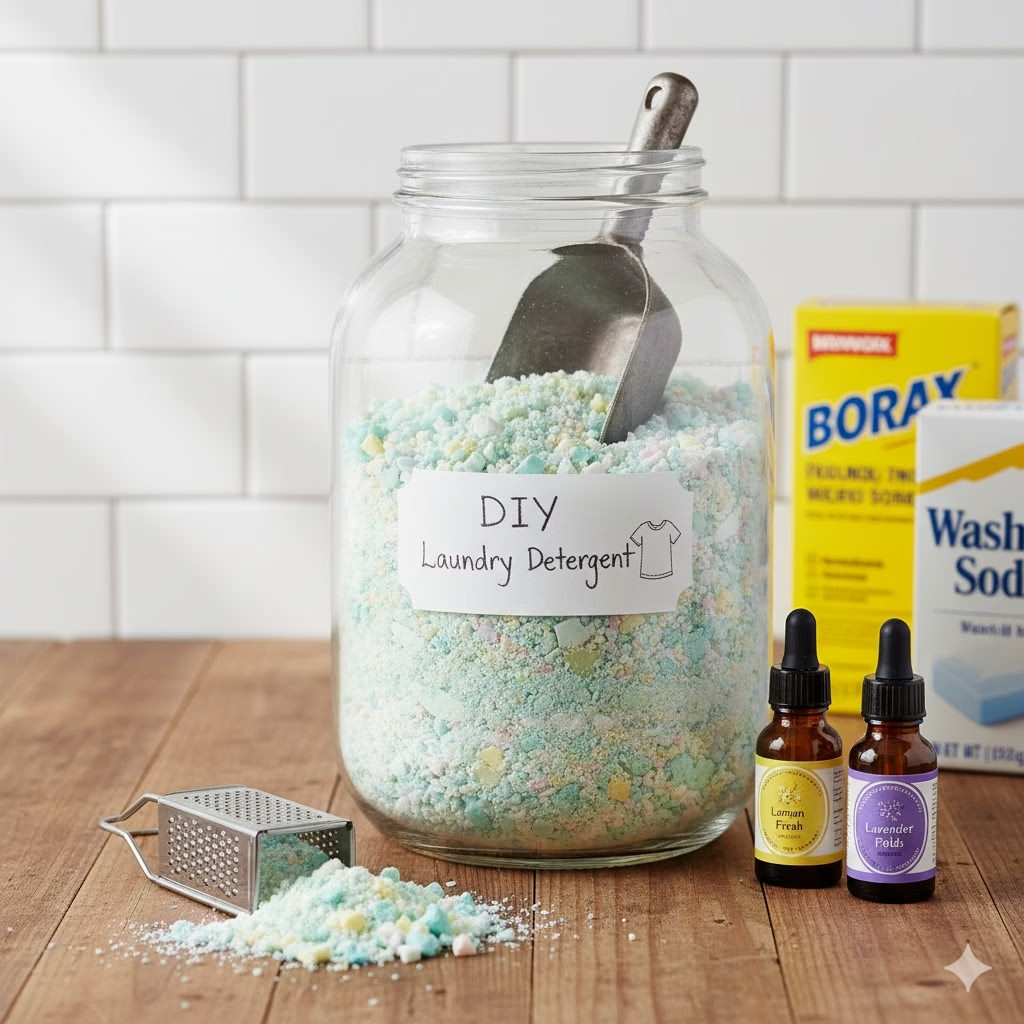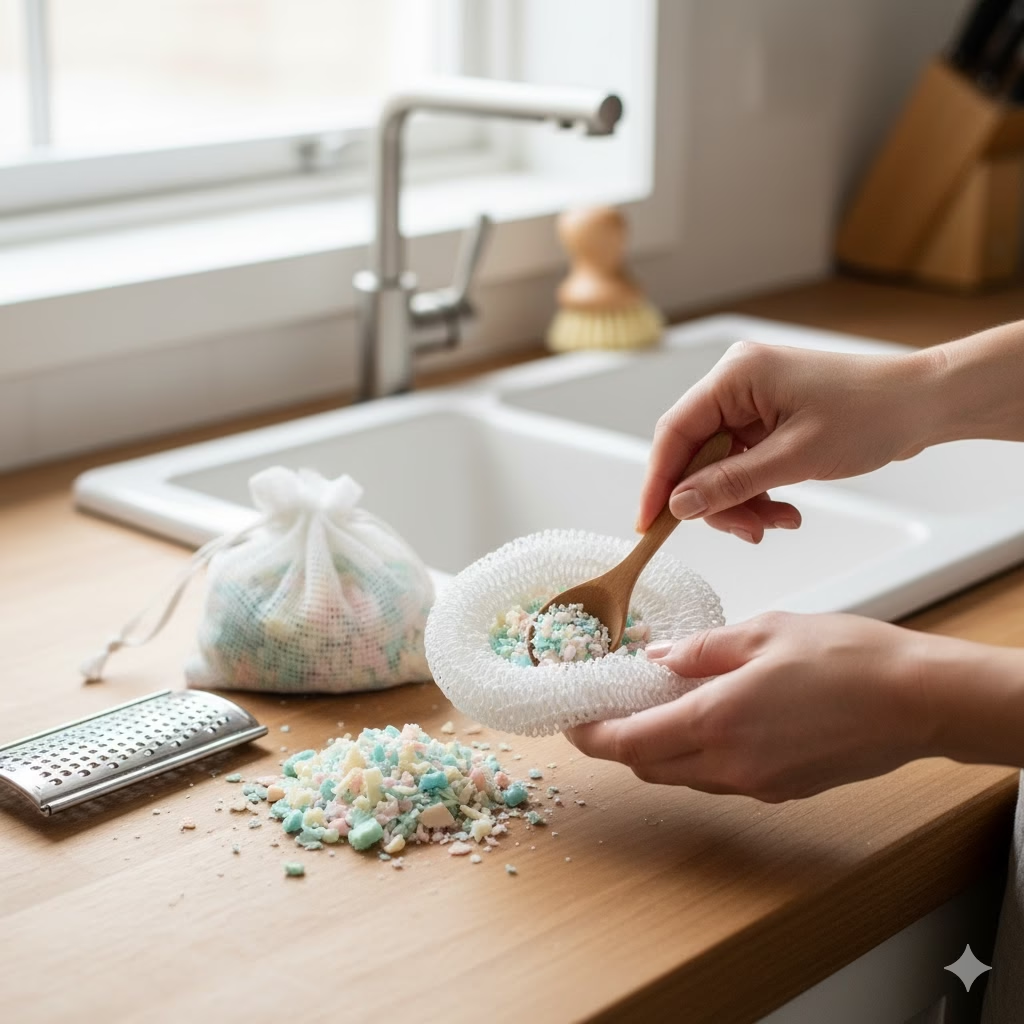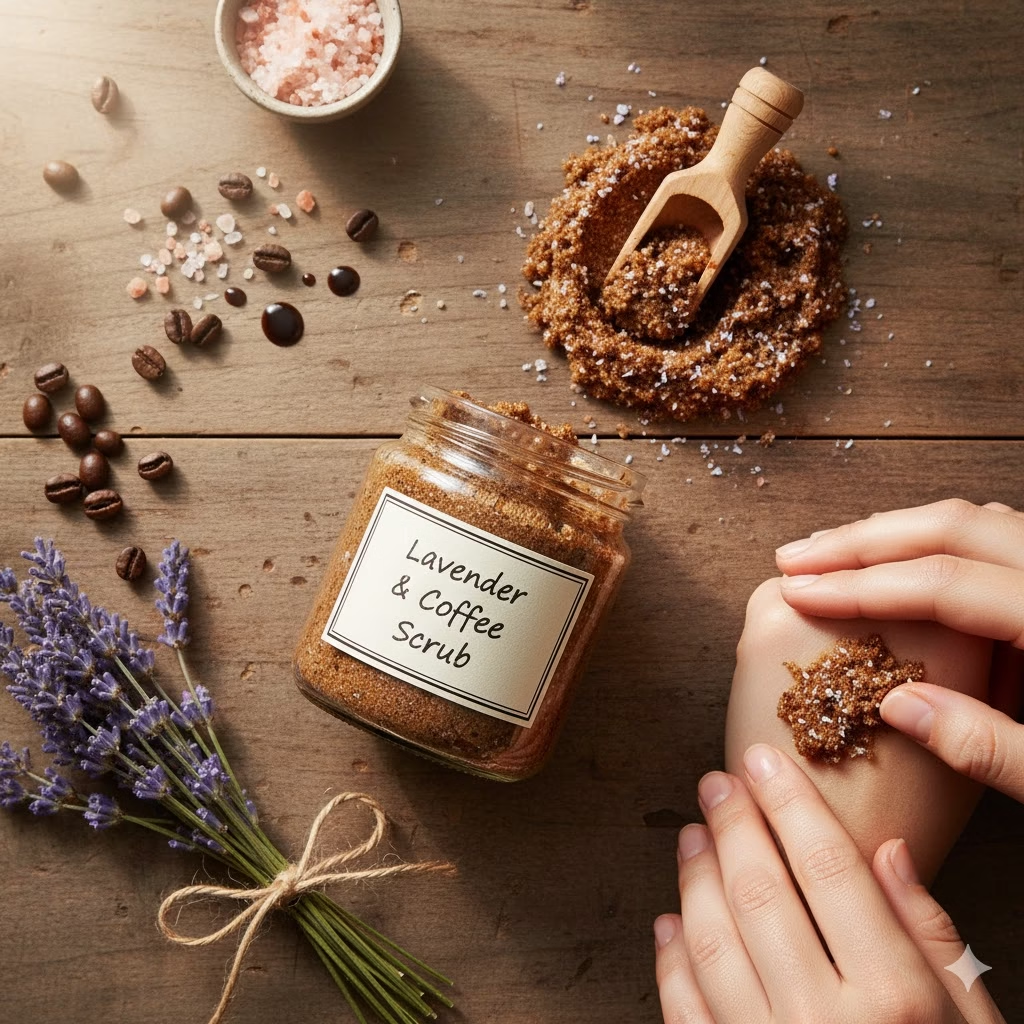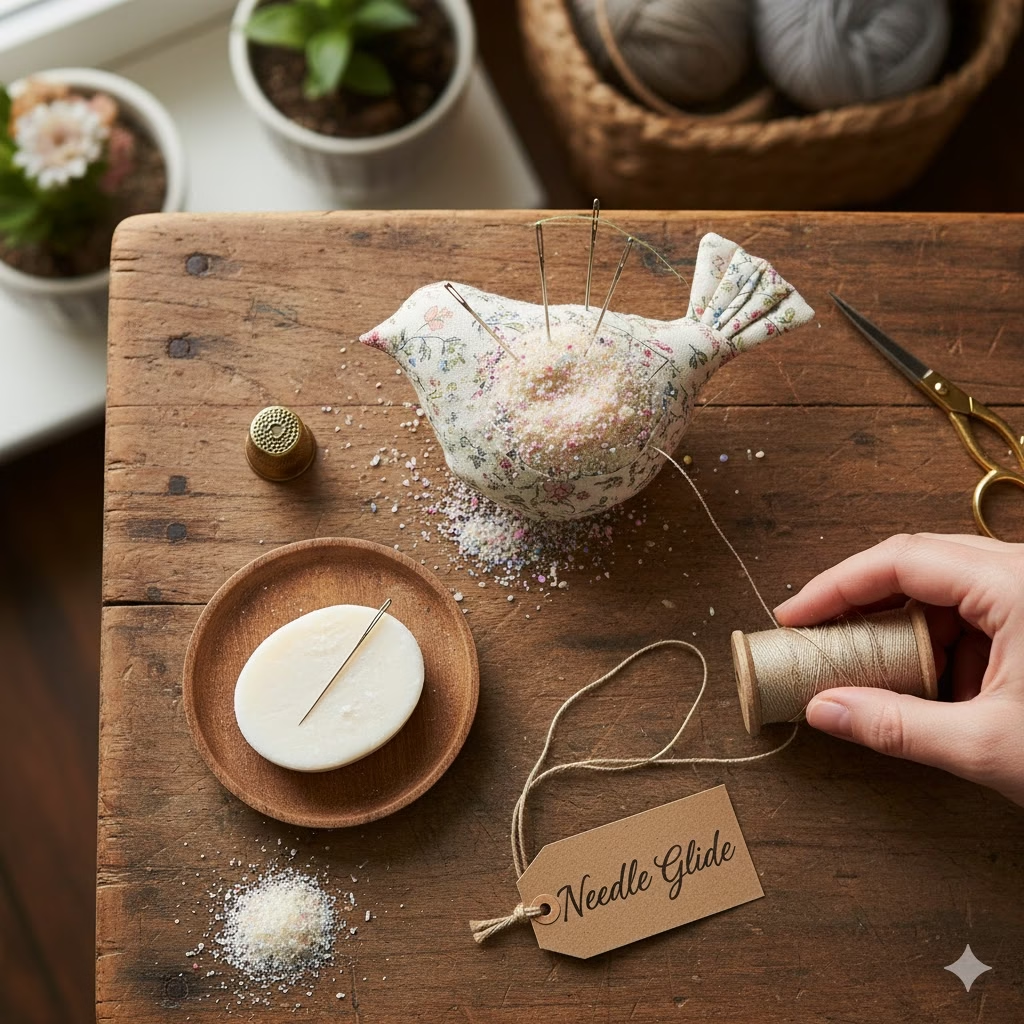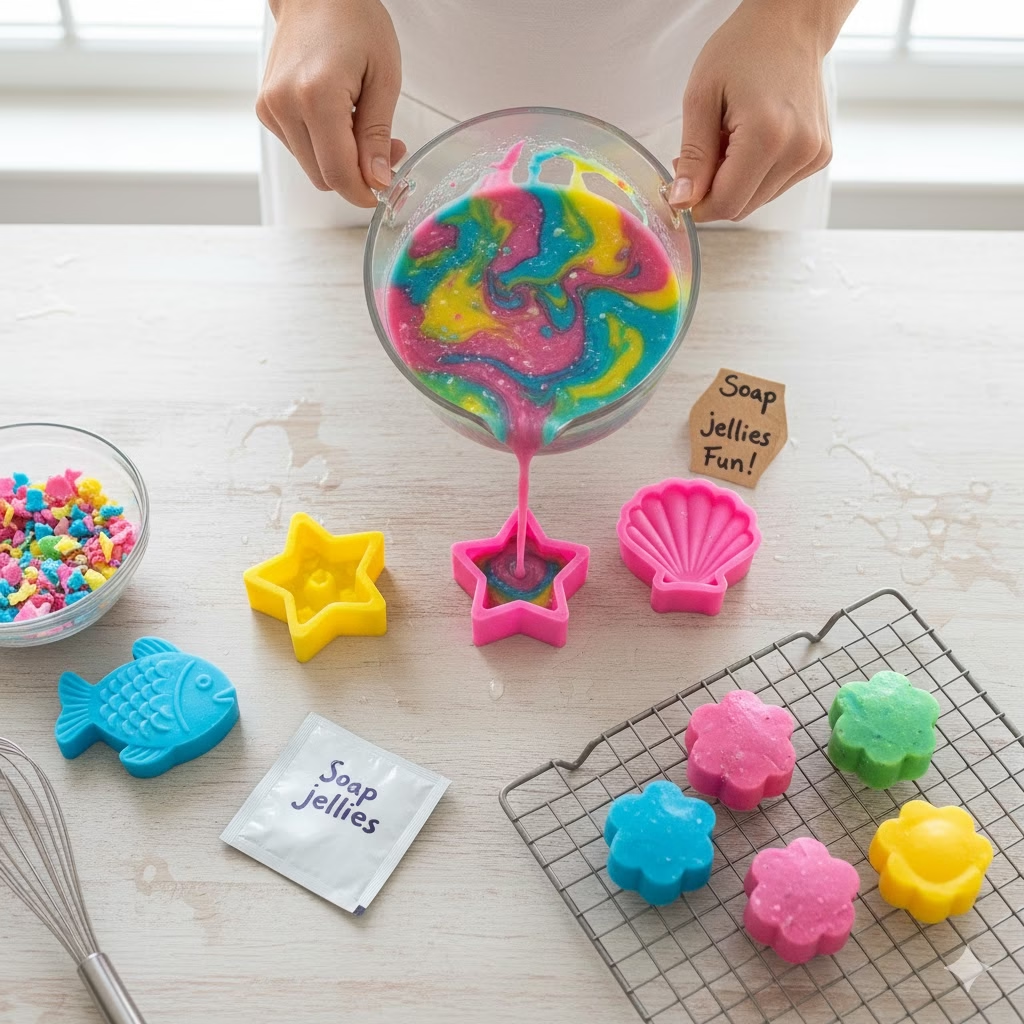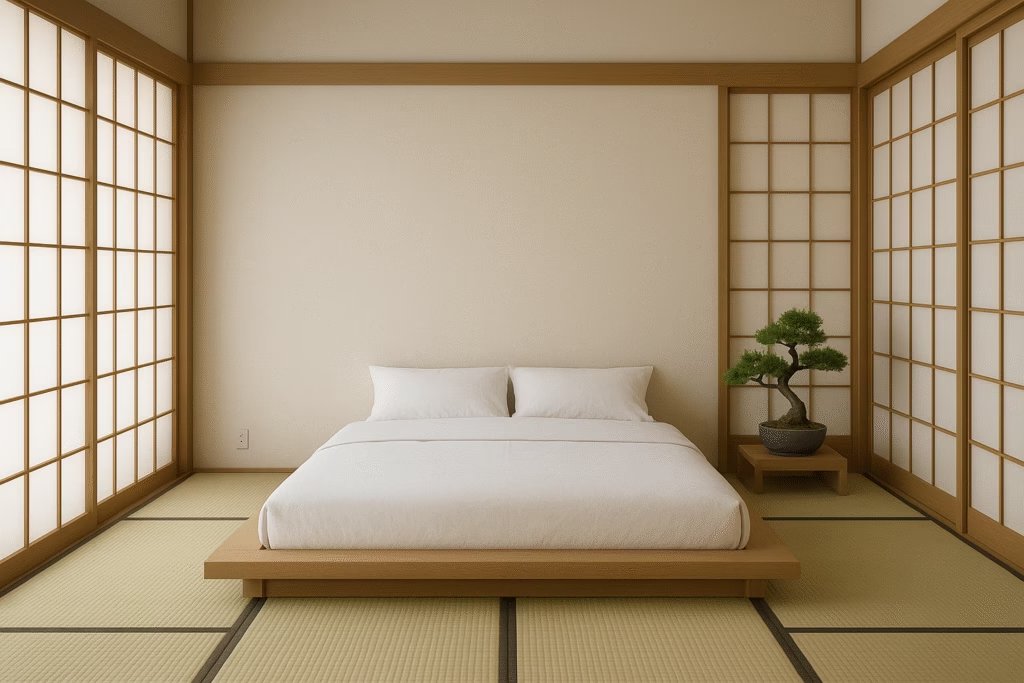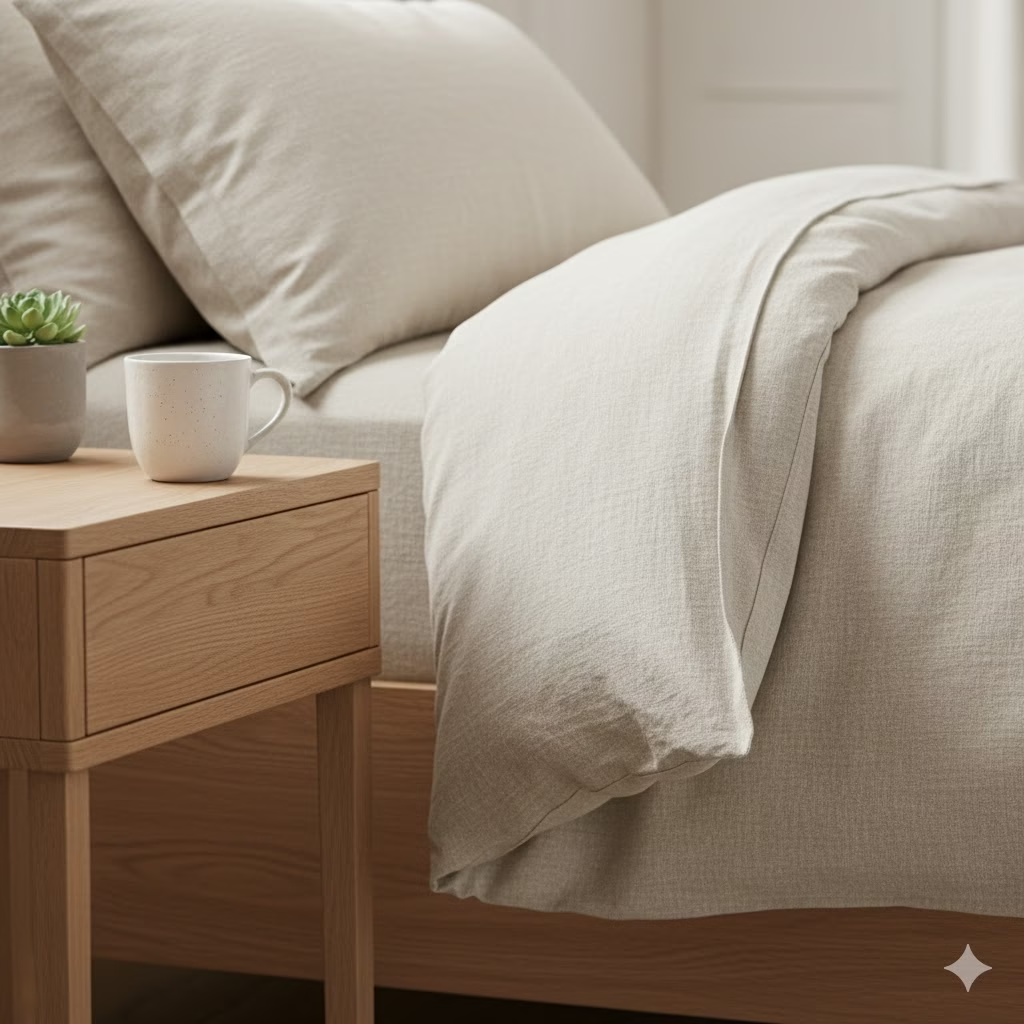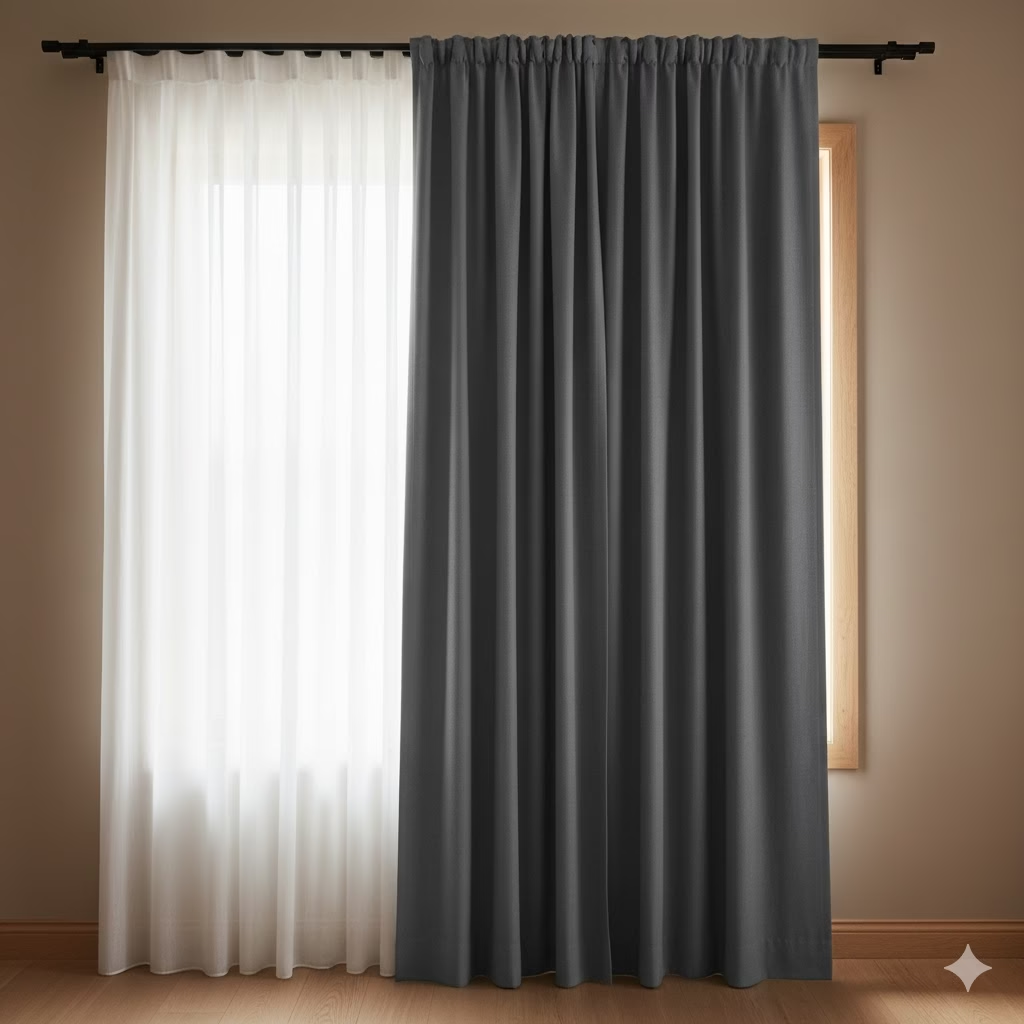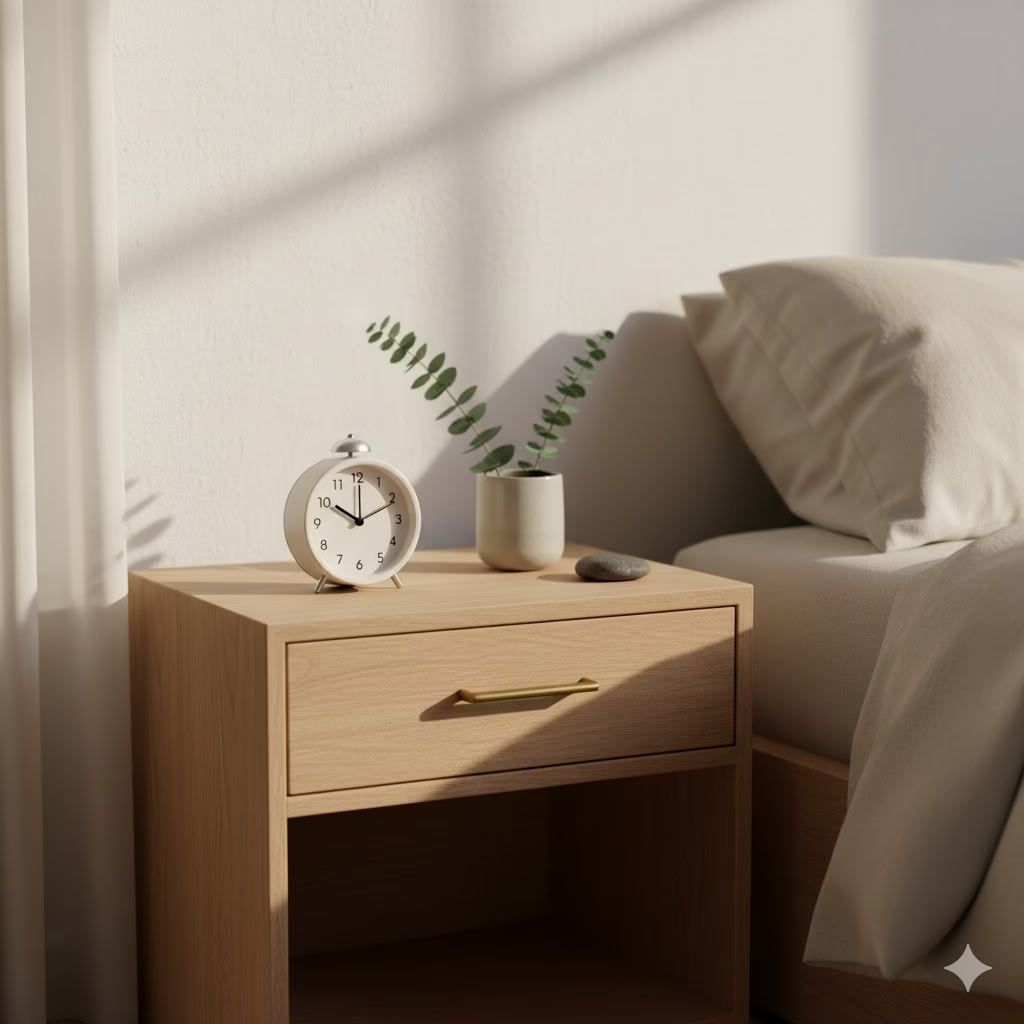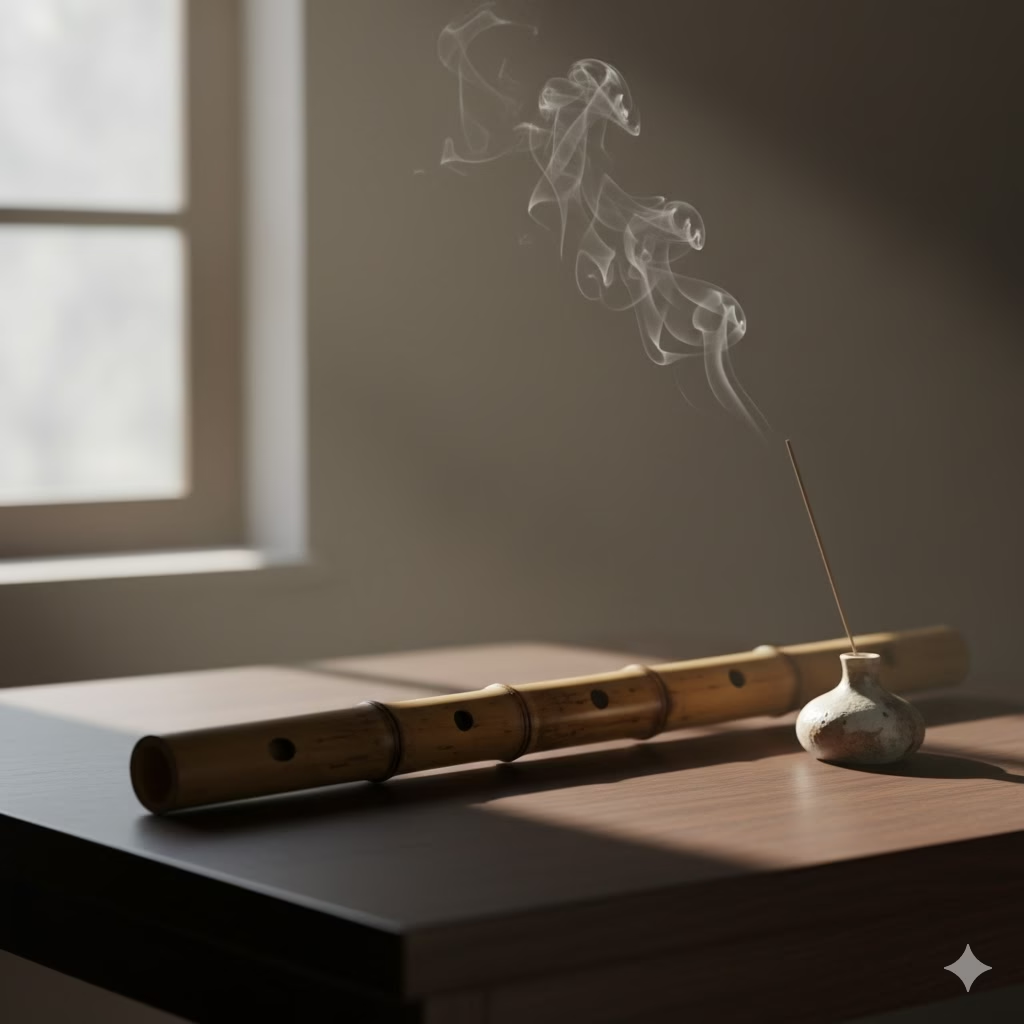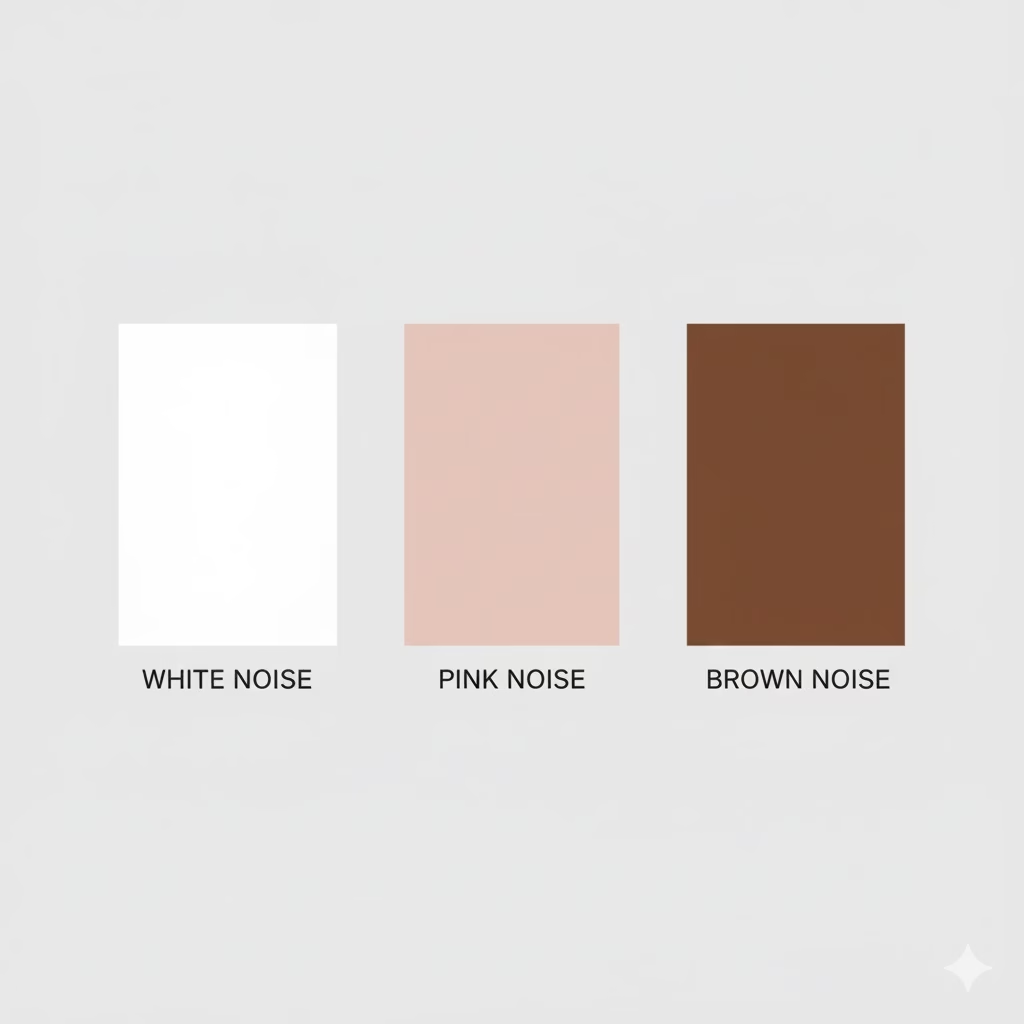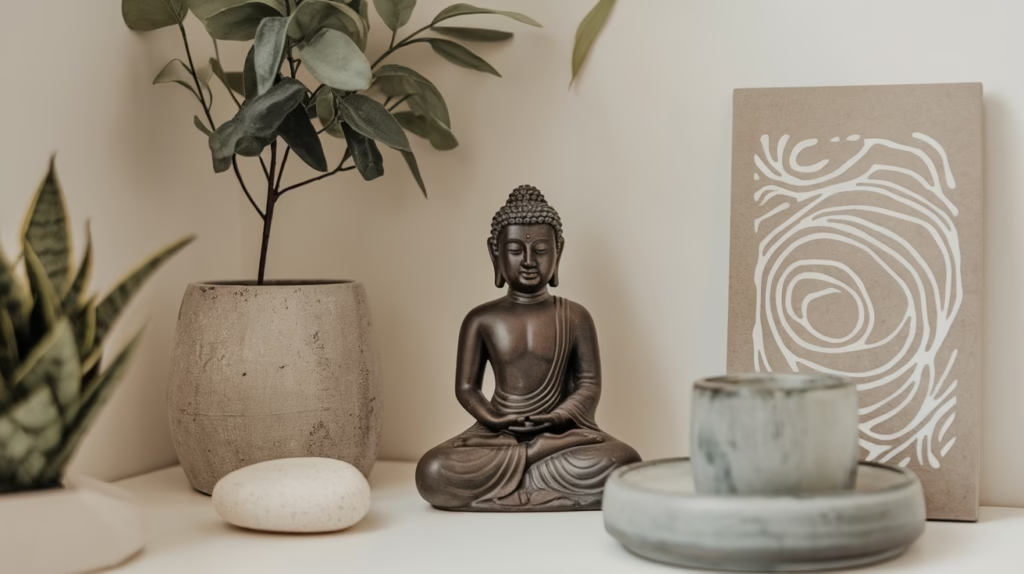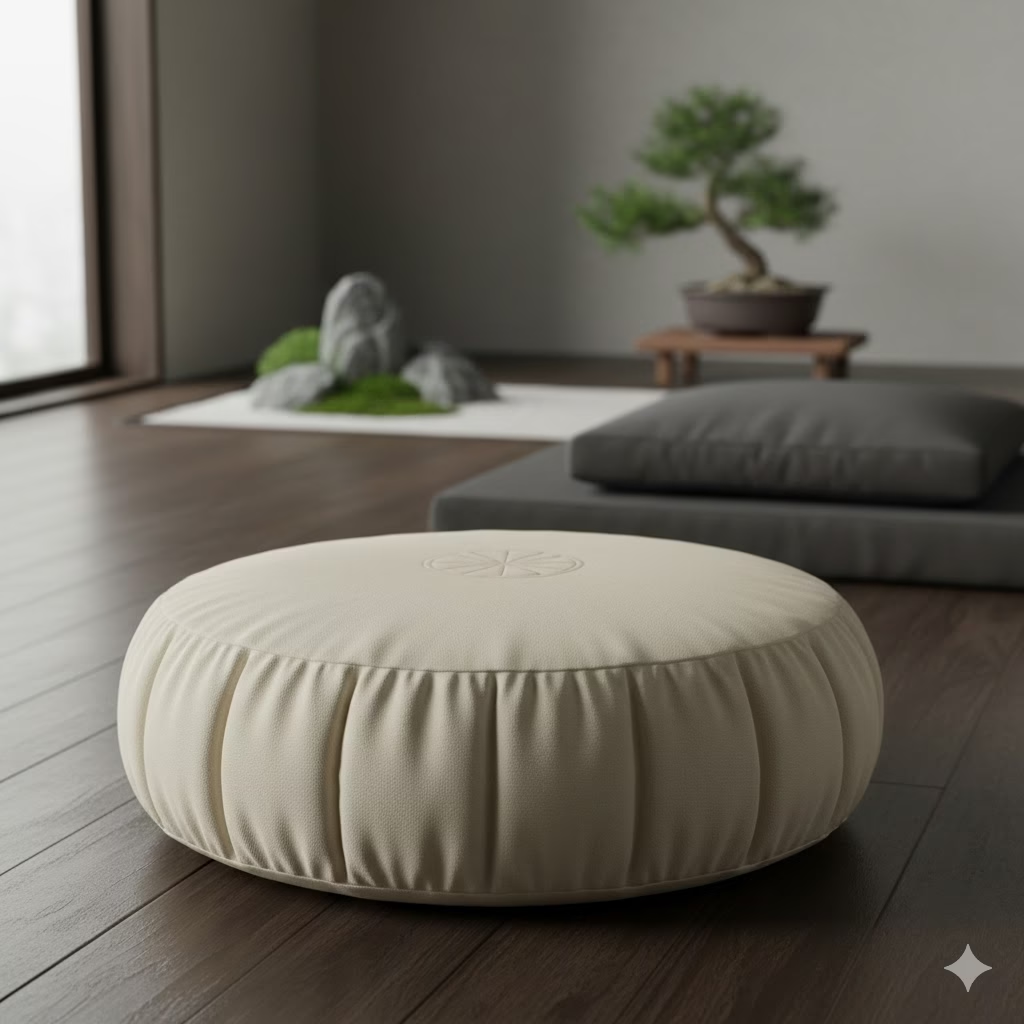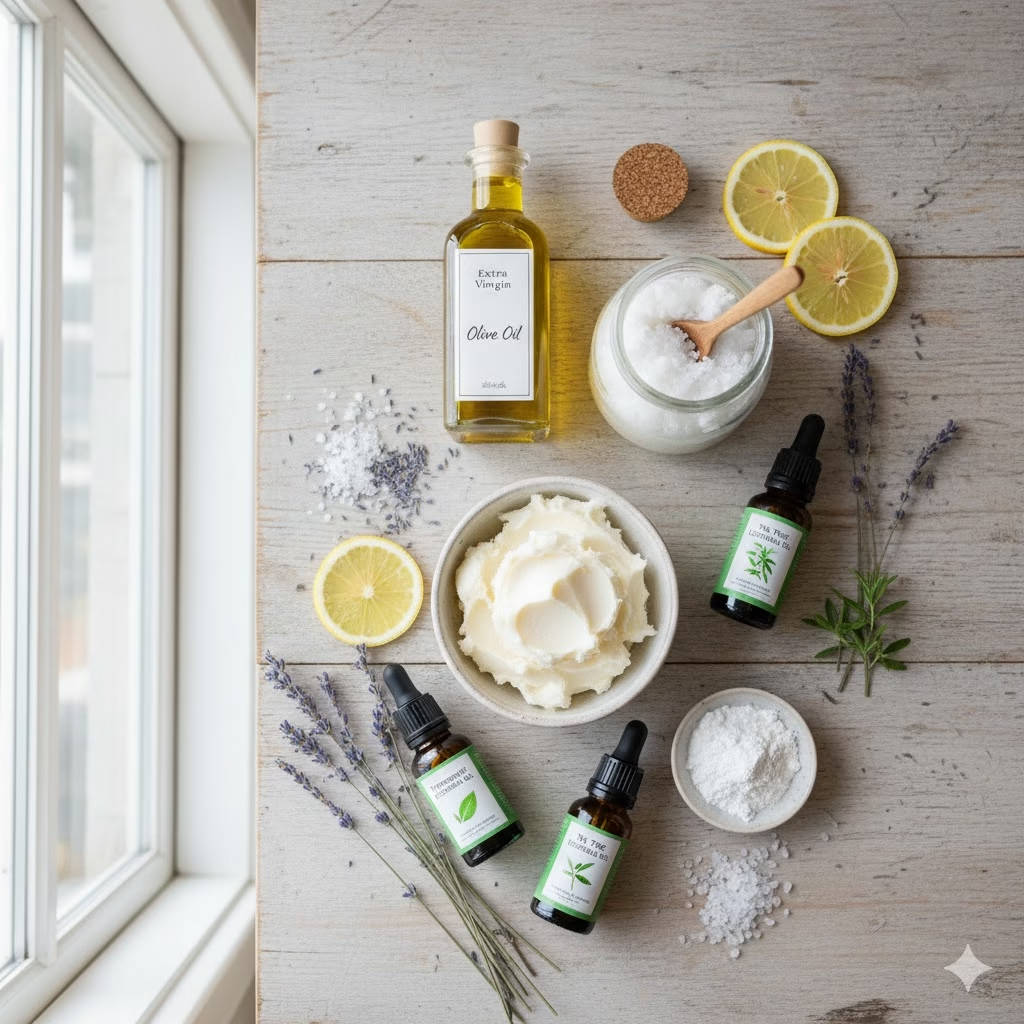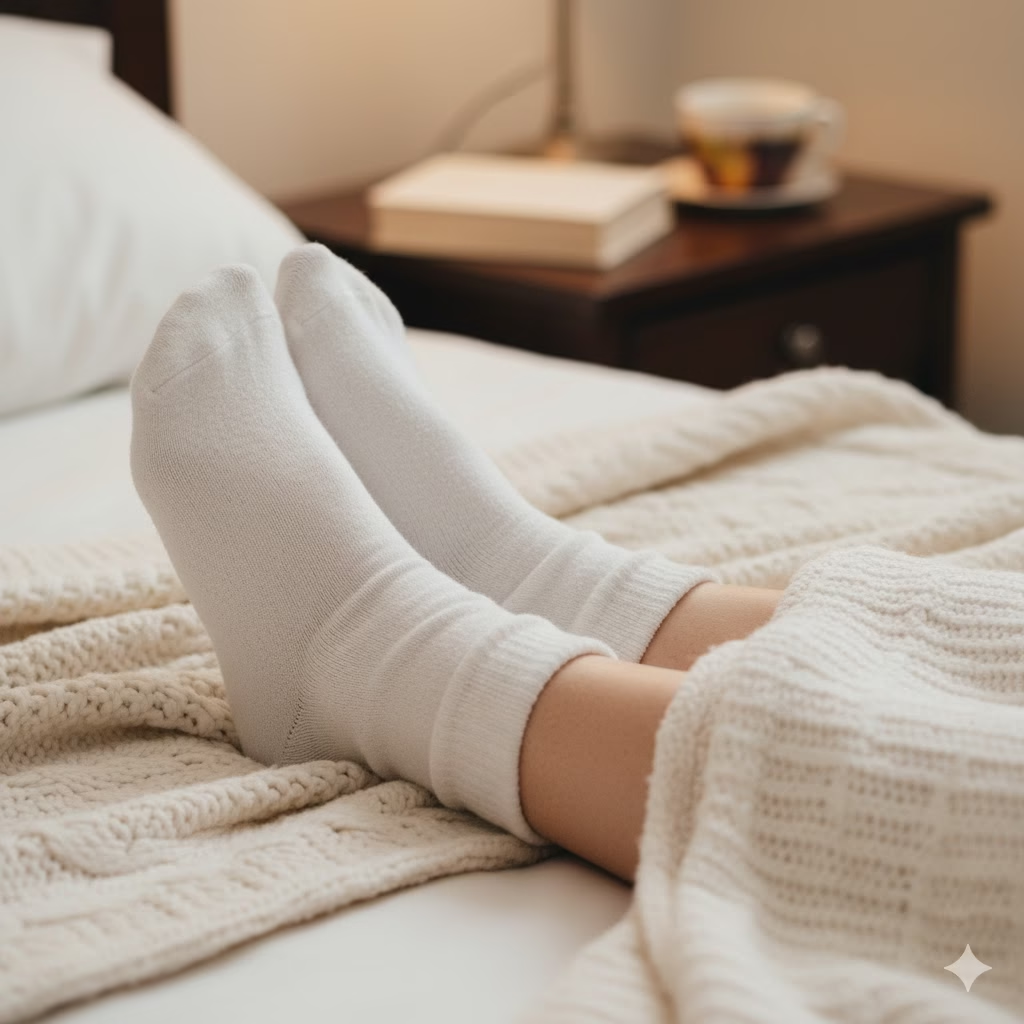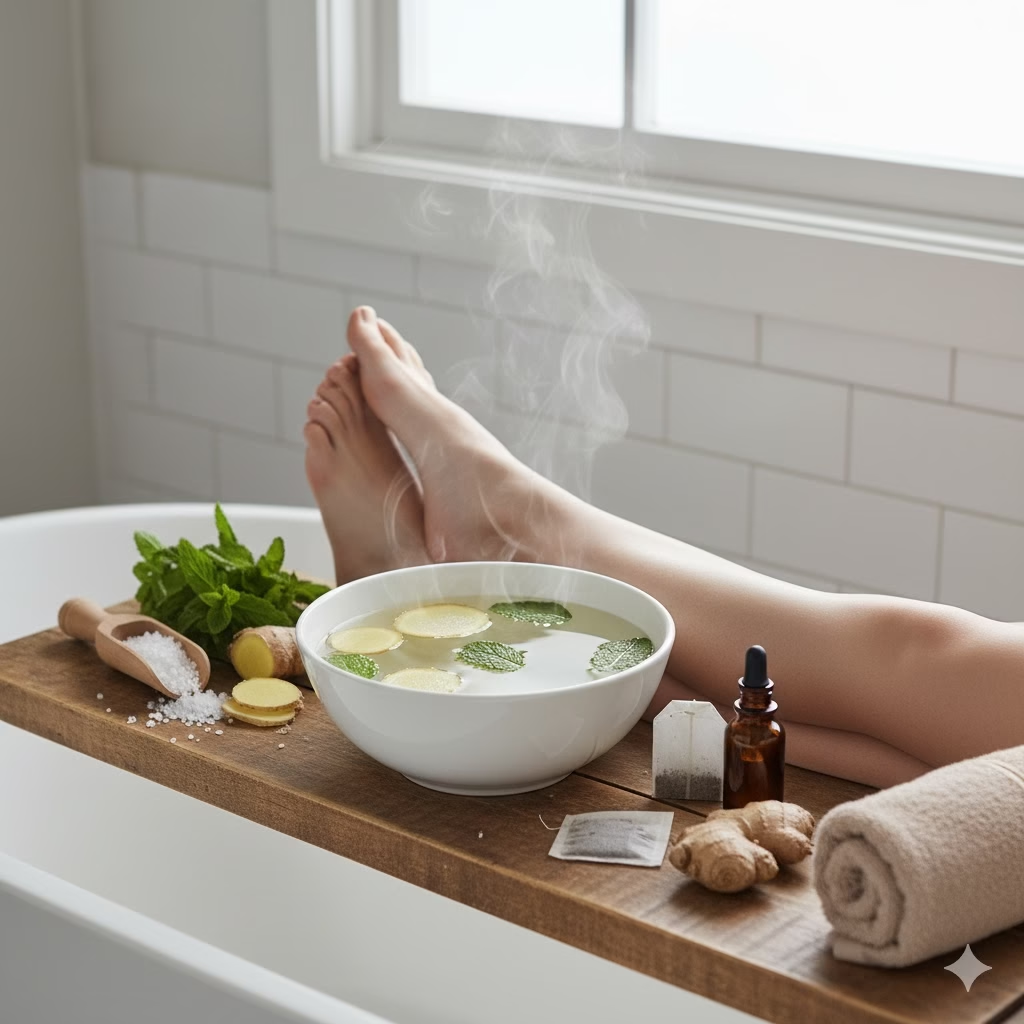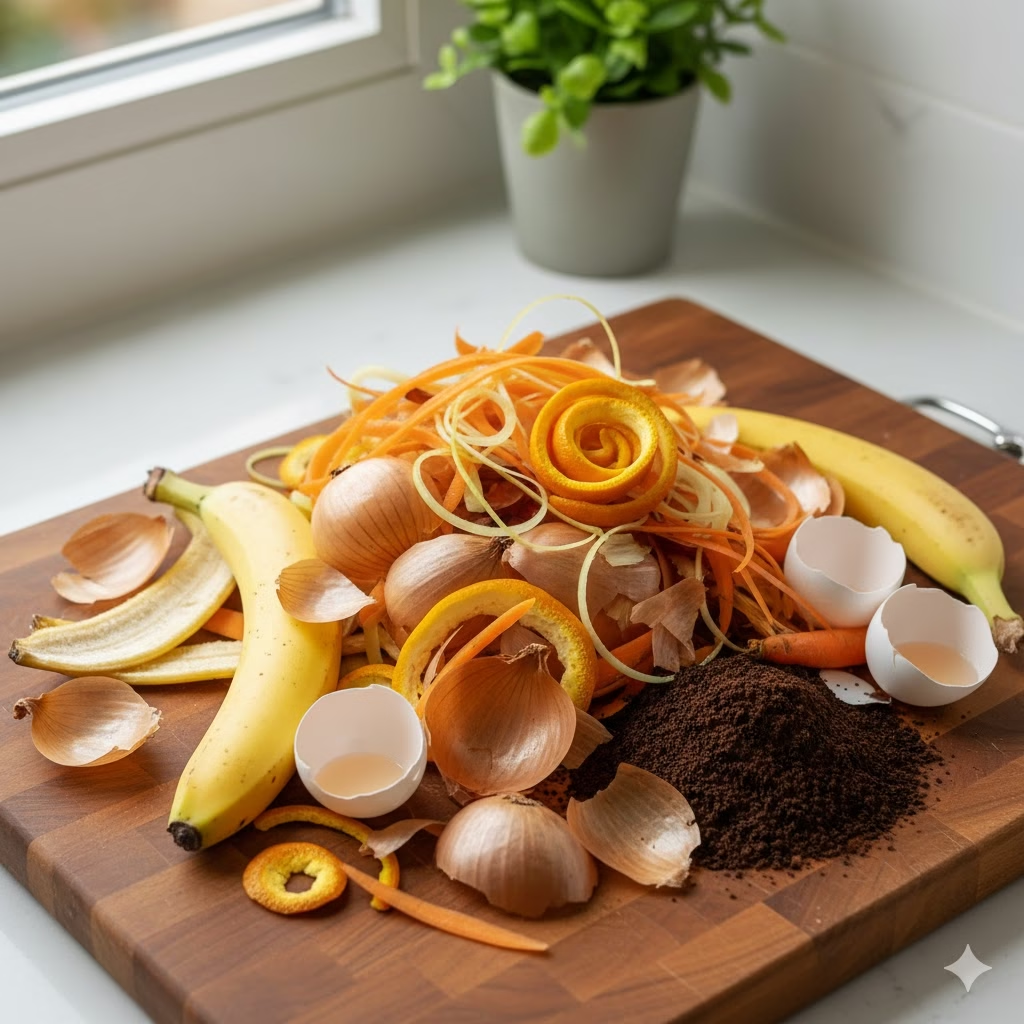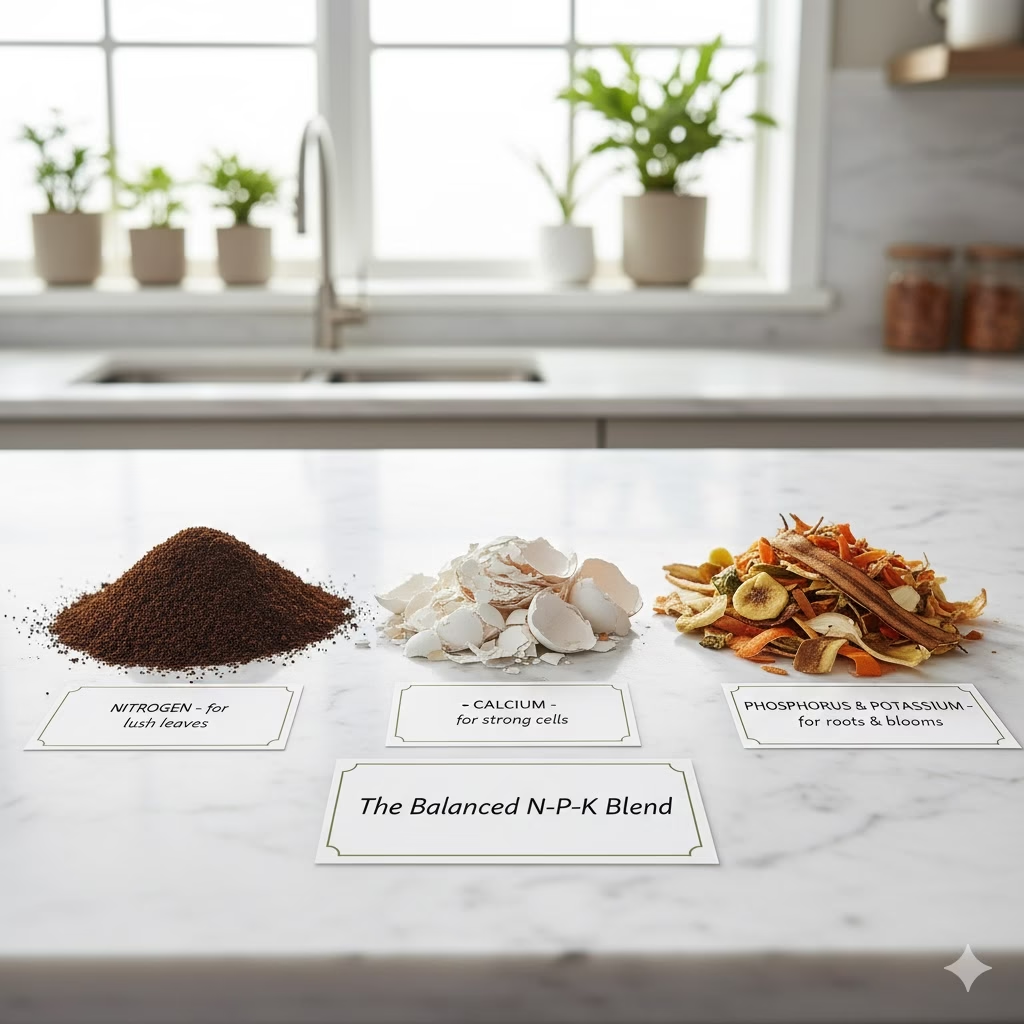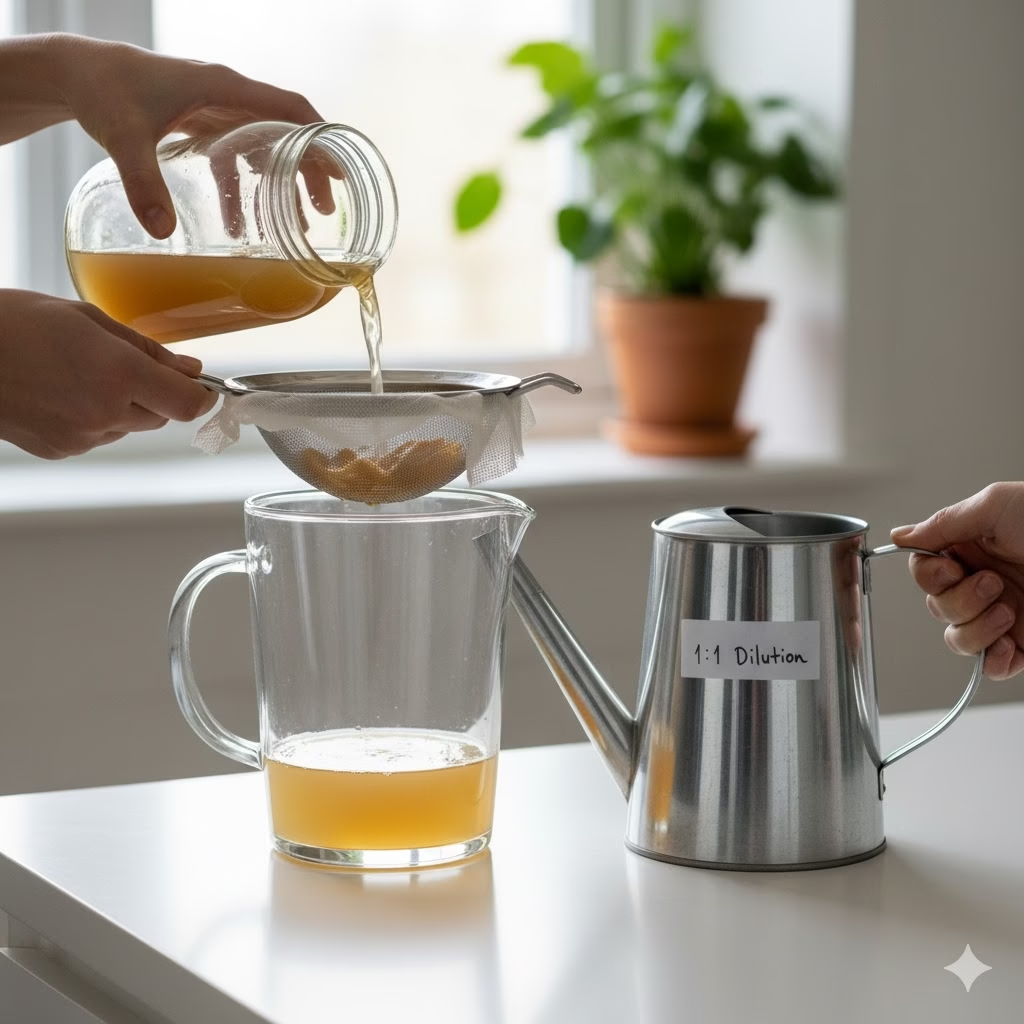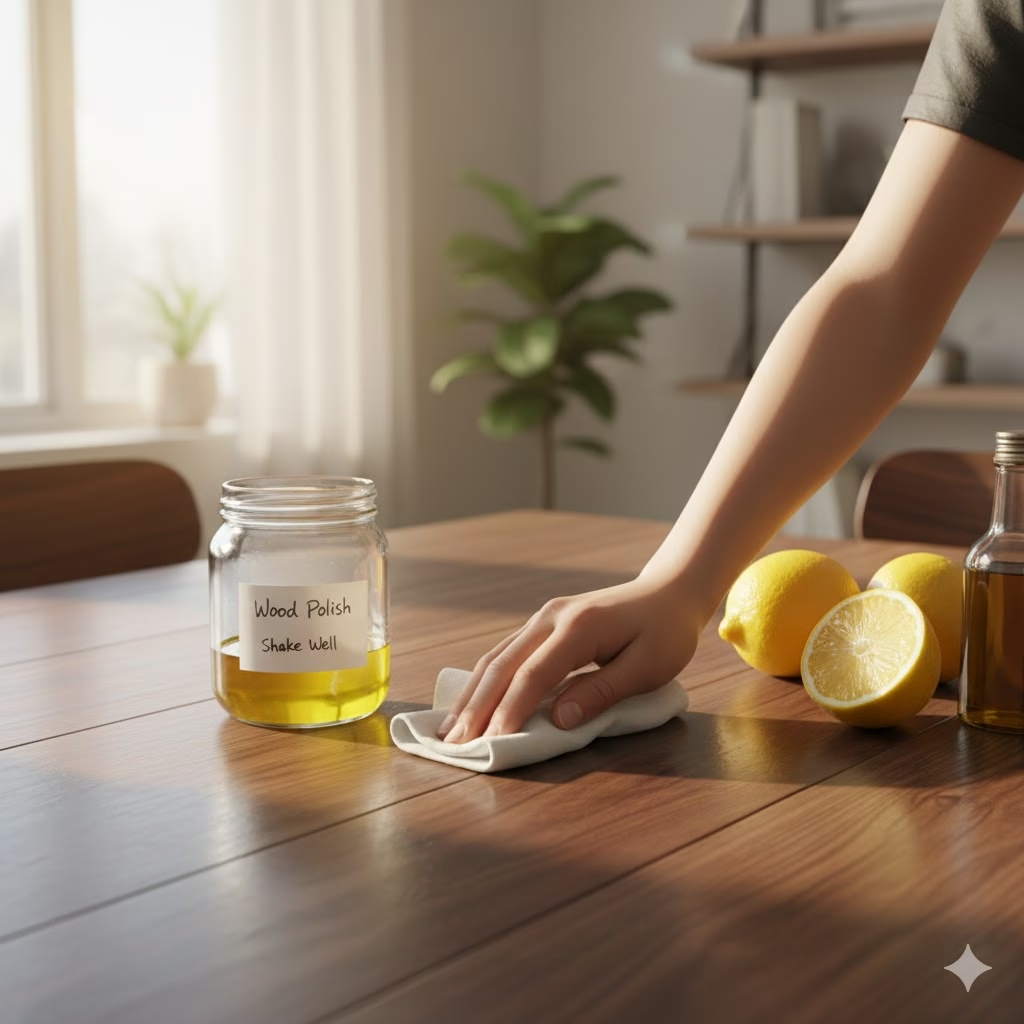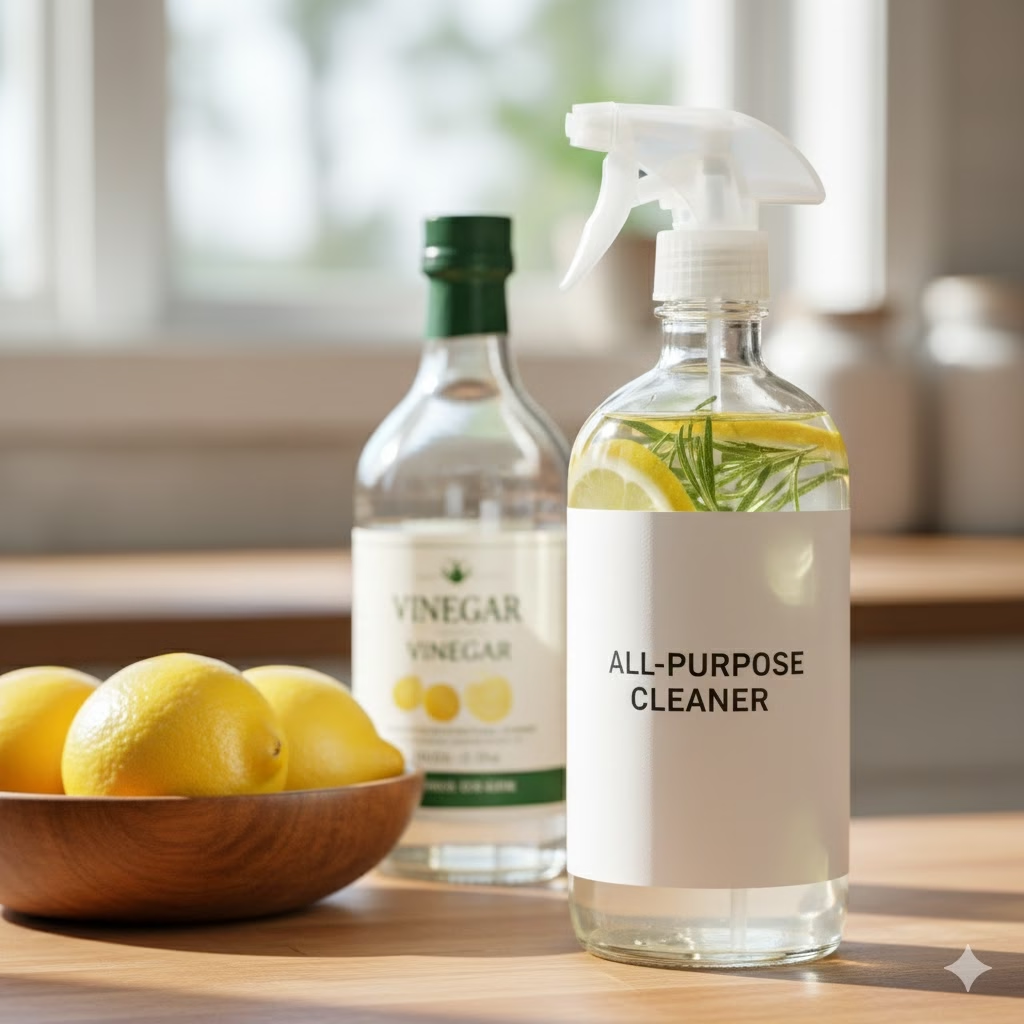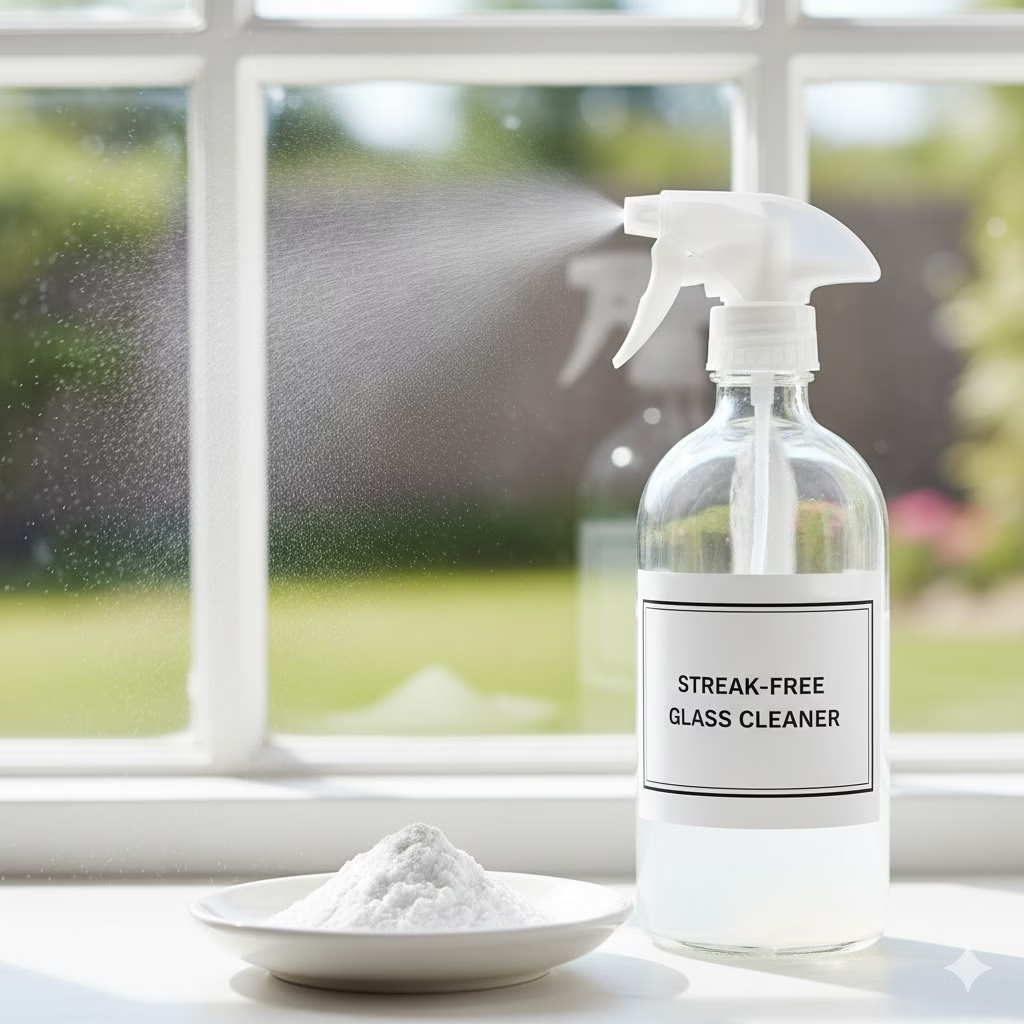
Like many people, I’m constantly looking for small, achievable ways to reduce my impact on the planet without completely changing my routine. I used to be fascinated by “zero-waste,” but the truth is, everyone generates some food scraps. Discovering how useful the simple banana peels are—something I always threw away—has been a game-changer. This easy habit has made my kitchen greener and my garden happier, proving that real sustainability starts with the everyday things we often overlook.
The Hidden Power of the Banana Peels
The push for a sustainable lifestyle often starts in the kitchen. We aim to reduce waste and find better uses for what we typically discard. The banana peel, unfortunately, is one of the most common kitchen scraps. Most people toss it without a second thought.
We eat countless bananas every year around the world. The peel makes up about 35% of the fruit’s weight. Yet, this fibrous, nutrient-dense skin is an amazing resource. It is more than just material for the compost heap. The banana peel is packed with key nutrients, fiber, natural oils, and powerful compounds. This makes it a great asset for cooking, gardening, cleaning, and even skin treatments.
Repurposing banana peels is perhaps the easiest, cheapest, and most accessible way to create a more sustainable home. By using these clever tips, you can cut down on waste, save money, and use natural solutions for common household needs.
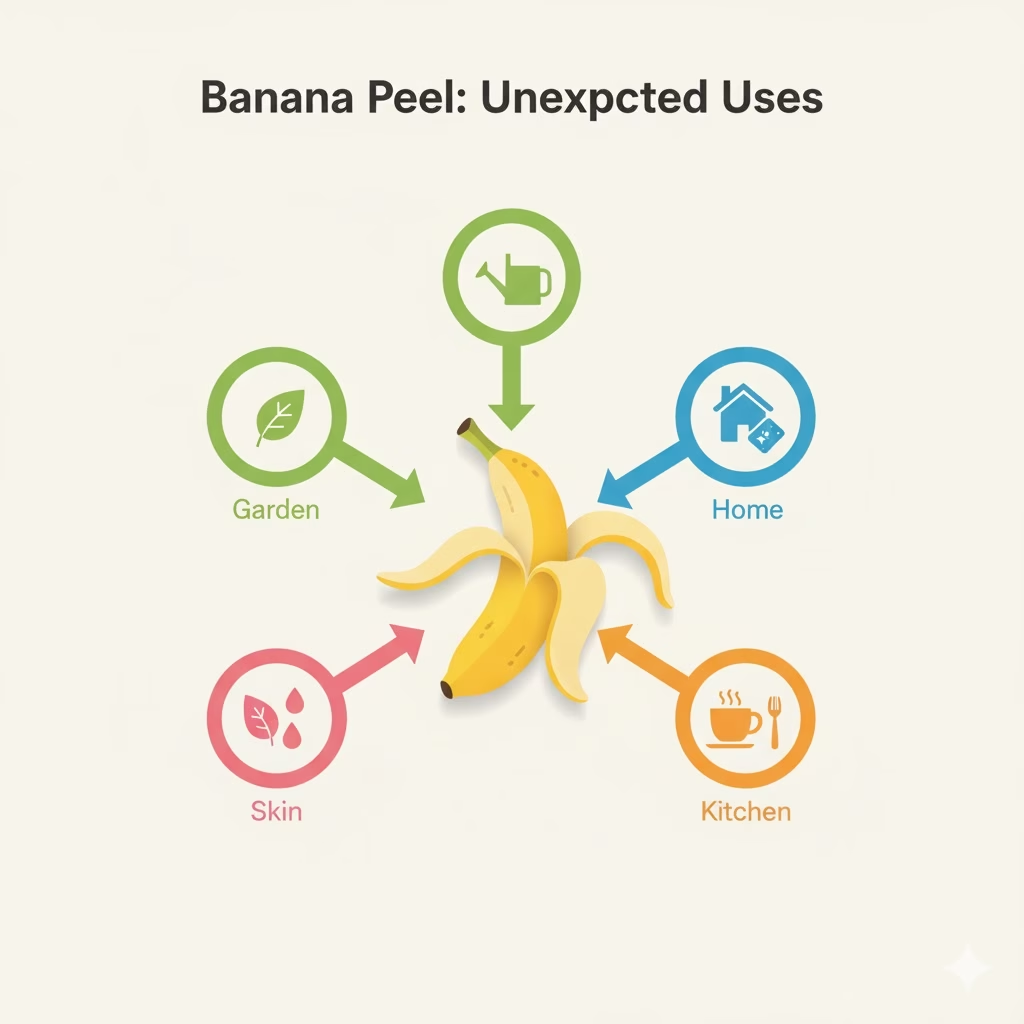
Part 1: Culinary Creativity – Banana Peels in the Kitchen
First, a vital step: always wash the peels very well. This removes any possible pesticides or dirt. Once clean, the texture of the peel makes it great for several healthy and creative additions to your meals. Eating the peel increases your intake of fiber, magnesium, and potassium.
1. Vegan Meal Magic: Faking Pulled Pork
One of the most surprising and delicious uses for banana peels is as a meat-free substitute. The stringy texture, especially after it’s slow-cooked, can feel very similar to pulled pork or bacon.
How to Do It:
- Prepare: Scrape away any fruit left on the inside of the peel. Boil the peels until they become soft (around 15 to 20 minutes).
- Season: Once cool, use a fork to shred the peels into strips. Mix the shredded peel with a savory, smoky marinade (use ingredients like paprika, liquid smoke, vinegar, and a bit of brown sugar).
- Cook: Fry or bake the marinated peels until they turn slightly crisp.
- Serve: Put them on a bun with coleslaw for a tasty “pulled peel” sandwich.

2. Adding Flavor: Curries and Stir-fries
Many regions, including parts of Southeast Asia, India, and Venezuela, have known the value of banana peels for centuries. They often include them in main dishes.
How to Do It:
- Cut: Chop or slice the washed peels into small, even pieces.
- Mix In: Add the pieces to your curries or stir-fries along with other vegetables. The peel absorbs the flavors of the spices and sauce. It adds a chewy element and more fiber.
3. Boosting Health: Smoothies and Baked Goods
Want a secret health boost? Pureed or finely cut peels can easily be mixed into various recipes.
How to Do It:
- Smoothies: Blend a whole, clean peel into your morning drink. This greatly increases the fiber content without changing the taste much.
- Baking: Finely chop or puree the peels. Fold the puree into your batter for muffins or banana bread.
4. A Natural Sleep Aid: Banana Peels in Tea
A simple tea made from the peel can help you sleep. This is because it is rich in magnesium and potassium, minerals known for relaxing muscles.
How to Do It:
- Boil: Put one clean banana peel in a pot with about 4 cups of water.
- Simmer: Bring the water to a boil, then turn down the heat and let it simmer for 10 to 15 minutes.
- Drink: Strain the liquid into a cup. Add a little honey or cinnamon for a better taste.
Part 2: Garden Goodness – Boosting Your Plants

The high levels of potassium, phosphorus, and magnesium in banana peels make them a fantastic natural fertilizer. They are a free and easy way to keep your plants healthy.
5. Free Plant Fertilizer and Soil Food with Banana Peels
Potassium is key for plants that flower and produce fruit. Skip expensive chemical fertilizers and use the nutrients already in the peel.
How to Do It:
- Bury Directly: Chop the peels into small pieces. Dig a hole a few inches deep around the base of plants that need extra food, like tomatoes, roses, or peppers. As the peels break down, they feed the roots.
- Banana Tea (Liquid Food): Soak several peels in a jar of water for one week. Use the strained, nutrient-rich liquid to water your plants. This gives them a fast, gentle dose of minerals.
- Compost: Just toss the peels into your compost bin. They rot quickly and add a powerful mix of minerals to your final compost.
6. Keeping Pests Away and Pollinators Happy
Banana peels can serve a double role in the garden. They help chase away unwanted bugs while attracting helpful insects.
How to Do It:
- Stop Aphids: The natural smell of banana peels can keep aphids away. Bury small, chopped pieces of peel near plants that aphids like to attack, such as roses and tomatoes.
- Attract Butterflies: Place very ripe, mushy banana peels on a flat stone or tray away from direct sunlight. The sweetness draws in butterflies, bees, and other good pollinators.

Part 3: Eco-Friendly Cleaning Solutions
The inside of a banana peel has natural oils and a soft, slightly waxy texture. This makes it perfect for simple, chemical-free polishing and cleaning jobs at home.
7. Shining Leather Shoes and Furniture
Forget harsh, strong-smelling polishes. Let the natural oils in the peel bring the shine back to your leather items.
How to Do It:
- Rub: Use the soft, inner part of a fresh banana peel. Gently rub it over leather shoes, bags, or furniture. The peel’s natural oils fill small scuffs and add shine.
- Buff: Use a clean, soft cloth to rub the surface until it gleams. This removes any extra residue.

8. Removing Tarnish from Silver with Banana Peels
A simple paste made from banana peels can gently clean tarnish from silver and silver-plated items.
How to Do It:
- Mix: Blend a few banana peels with a tiny bit of water until you have a thick paste.
- Clean: Rub the paste onto tarnished silver using a soft cloth.
- Finish: Rinse the silver thoroughly and dry it with a soft towel.
9. Dusting and Brightening Houseplant Leaves
Dust often collects on houseplant leaves, making them look dull and blocking light.
How to Do It:
- Wipe: Use the inside of the banana peel to carefully wipe the top of large, dusty leaves (like a rubber plant or Monstera). This removes the dust and leaves the leaf with a beautiful, healthy shine.
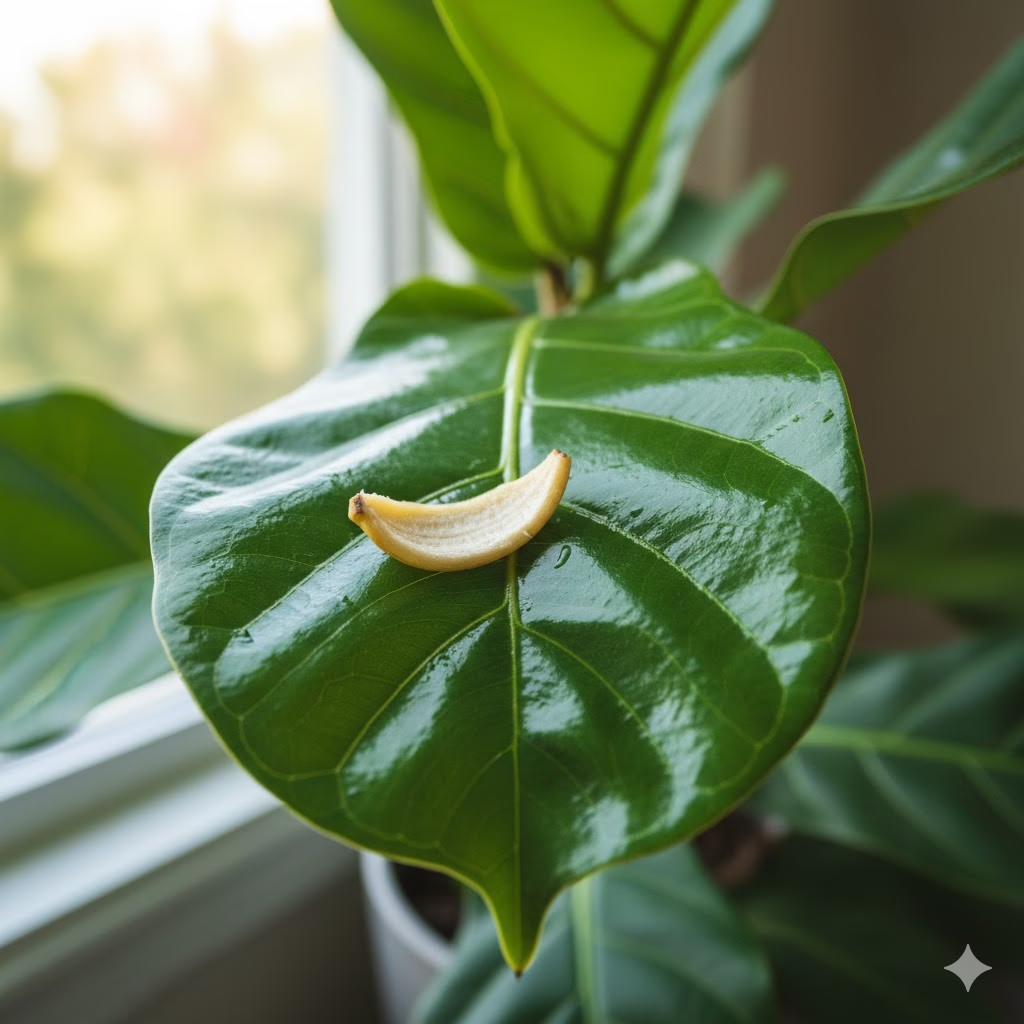
Part 4: Skin and Health Remedies
Banana peels contain anti-inflammatory and antioxidant agents. This is why they are often used in simple home remedies for skin issues and minor injuries.
10. Soothing Insect Bites and Rashes
The calming properties of the peel may help quiet irritated skin.
How to Do It:
- Apply: Gently rub the inside of a fresh banana peel over an itchy bug bite, mosquito sting, or an area with a minor rash. Repeat this as needed for fast relief.
11. Taking Out Splinters
For small splinters that are just below the surface of the skin, a banana peel patch may help draw them out.
How to Do It:
- Cover: Put a small piece of banana peel (inside facing the skin) right over the splinter. Hold it in place with a bandage overnight. The moisture and natural ingredients in the peel can help bring the splinter to the surface, making it easier to pull out with tweezers.
12. Reducing Puffy Eyes
Many people say that placing banana peels under the eyes can help reduce puffiness and calm irritation.
How to Do It:
- Cool: Place the peels in the refrigerator for about 30 minutes.
- Place: Cut two small pieces. Place the inside surface directly under your eyes for 10 to 15 minutes. The cold temperature and the natural soothing compounds work together.

13. Gentle Teeth Polish
We should note that no science proves banana peels whiten teeth. However, rubbing the peel on your teeth uses gentle friction, which can help remove plaque from the surface.
How to Do It:
- Rub: Gently rub the inside of a fresh peel over your teeth for about two minutes.
- Brush: Follow this by brushing your teeth as you normally would.
Part 5: Bigger Impact: Environment and Industry
The usefulness of banana peels goes beyond the home. Scientists are looking into using them for big-picture industrial and environmental solutions.
14. Cleaning Water
In an exciting discovery, studies show that chopped banana peels can absorb toxins. They can effectively remove heavy metals, like lead and copper, from dirty river water. This offers a cheap, natural method for cleaning water, especially in developing countries.

15. Producing Fuel and Animal Food
Researchers have successfully used banana peels as a source material to produce ethanol. Ethanol is a cleaner-burning fuel. This offers a way to create fuel without relying on food crops. Also, in areas where bananas are grown, the peels are a common, nutritious addition to animal feed for livestock.
Conclusion
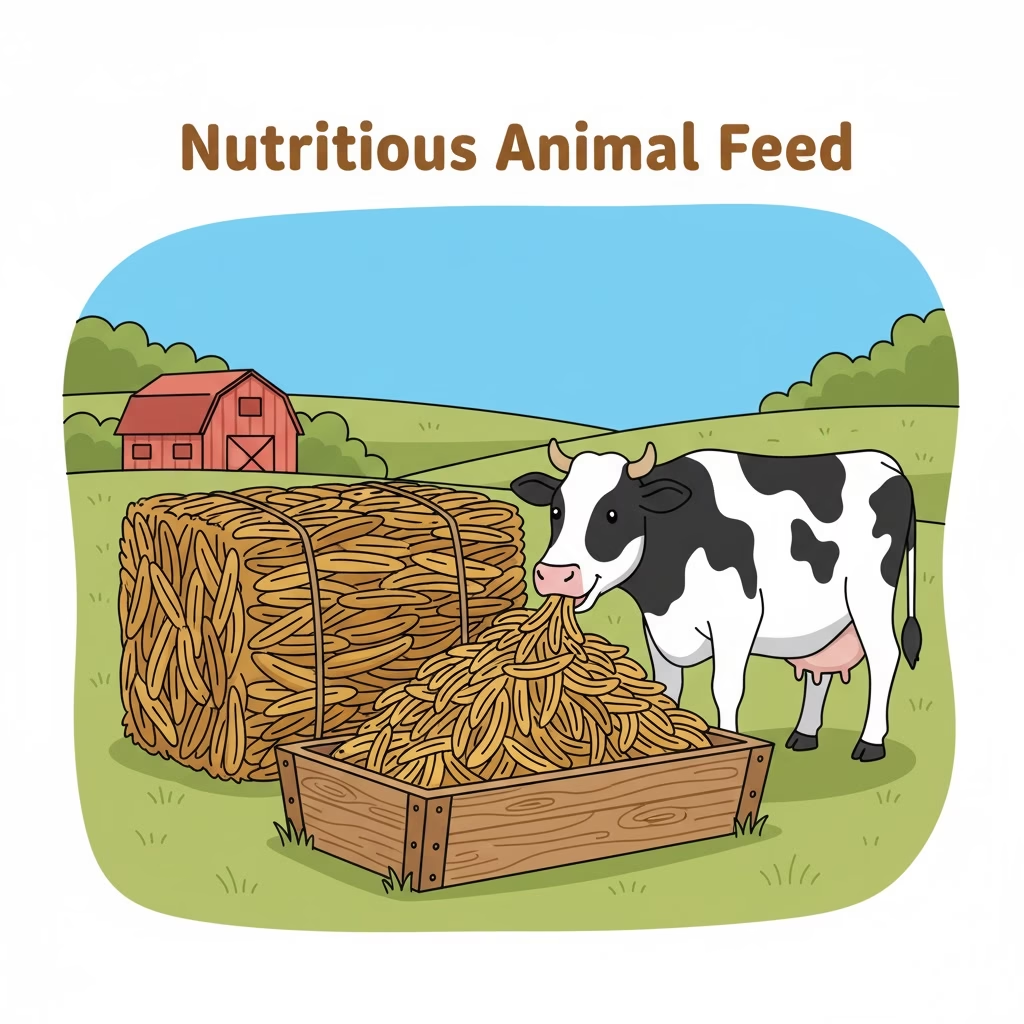
The next time you eat a banana, remember the value of the peel before you throw it away. You are holding a powerful, multi-use tool. It can boost your garden, clean your home, add nutrition to your meals, and even soothe your skin. The simple choice to repurpose banana peels is an easy, strong step toward a zero-waste lifestyle. You can make your home much more sustainable, one peel at a time.
Frequently Asked Questions (FAQ)
Q: Are banana peels safe to eat?
A: Yes, after washing them thoroughly, banana peels are safe to eat. They are very fibrous, so they are best when cooked, blended into a smoothie, or made into a puree.
Q: Should I use organic banana peels for cooking and skin treatments?
A: Yes, it is best to use organic banana peels. This is crucial for anything you eat or put directly on your skin. If you use standard peels, make sure you wash them very, very well to remove any residue.
Q: How quickly do banana peels break down in the garden?
A: Banana peels break down quite fast. They usually decompose within a few weeks to a couple of months. The speed depends on how moist the soil is and how small you chop the pieces. Cutting them smaller makes them break down faster.
Q: Will banana peels attract pests to my garden?
A: Very ripe peels can attract good insects like butterflies. However, if you leave exposed peels on the soil surface, they might attract pests like fruit flies or rodents. Always bury the peels a few inches below the soil when you use them as a fertilizer to avoid this.
References
- WebMD – Health Benefits of Banana Peel
- Healthline – 23 Banana Peel Uses
- NIH – Banana Peels: A Waste Treasure for Human Being – PMC
Recent Posts



